The best backgrounds and traits in Starfield
via Mint VR
Apple is reportedly testing new OLED microdisplay suppliers to increase the production scale of future Vision headsets.
Multiple sources including The Information, The Financial Times, and South Korean outlet The Elec have previously reported that Vision Pro, Apple's first headset set to launch next year, is heavily supply constrained due to the limited production capacity of its sole OLED microdisplay supplier Sony.
Those reports suggest Apple may only be able to ship up to half a million Vision Pro headsets in 2024, so the product will have a slow US-first rollout. These production constraints are also likely a key contributor to the $3500 price.
The Information's Wayne Ma now reports that Apple is testing OLED microdisplays from two additional suppliers, both Chinese, BOE and SeeYa Technology. If the samples meet Apple's standards, the components could be used in Vision Pro's successor and the cheaper non-Pro Vision headset reportedly planned for around 2026.
OLED microdisplays are manufactured directly onto silicon wafers with a process very different to smartphone or TV-sized OLED panels. While the technology itself isn't new, it was mainly only used in low volume products like high-end camera viewfinders and in some industrial smart glasses. Mass production of OLED microdisplays are only just coming online this year.
Two niche PC-based SteamVR headsets launching this year feature 2560×2560 OLED microdisplays, the $1000 Bigscreen Beyond and the $1700 Shiftall MeganeX.
Beyond's display is from SeeYa Technology, one of the companies Apple is reportedly in talks with. But the Sony-supplied microdisplays used in Vision Pro are much higher density. Apple said the two displays together have 23 million pixels, which would equate to around 3680×3140 each for the 7:6 aspect ratio the marketing renders show.
Chinese suppliers aren't the only potential alternative to Sony's microdisplays though. In 2021 LG announced it was building 3K and 4K OLED microdisplays for VR, and in May Samsung announced an acquisition of American microdisplay company eMagin, which was also building a 4K OLED microdisplay for VR, citing "significant potential of growth" in XR devices. Mark Zuckerberg's Meta was reportedly in talks with both LG and Samsung as of November to secure microdisplays for its own future headsets and glasses.
 UploadVRDavid Heaney
UploadVRDavid Heaney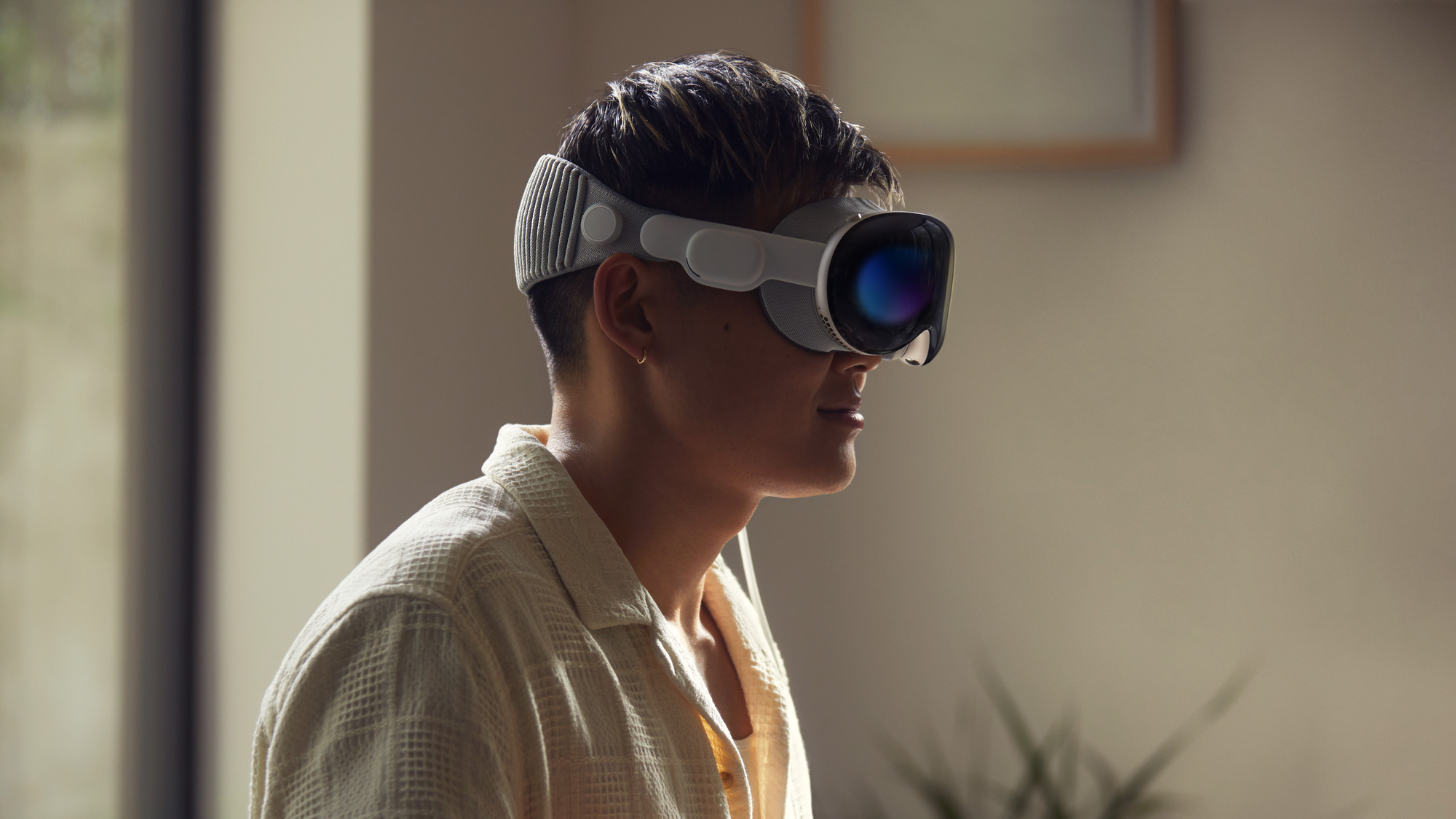
Apple bringing in new suppliers could enable much larger production volumes than the first Vision Pro, and thus more affordable product pricing. But OLED microdisplays are difficult to manufacture at high yield, so it's still unclear exactly which companies can manage to supply them at scale while meeting the quality standards companies like Apple expect.
Searching for new VR games in September 2023? We're rounding up our latest monthly highlights.
August might be this year's quietest month for VR so far with only a handful of games, most targeting PSVR 2. It didn't lack big names, though. There was I Expect You To Die 3, Firewall Ultra, Crossfire: Sierra Squad and VR Skater, and we also previewed Border Bots VR. Other notable releases include Phasmophobia, Green Hell VR, The Riese Project - Prologue and War of Being.
Thankfully, September looks considerably busier across most major platforms thanks to a stacked line-up. Let's not forget Connect will reveal further Meta Quest 3 details on September 27. We expect the conference to mostly focus on hardware, but there's a good chance Meta may reveal more about key releases like Asgard's Wrath 2.
As always, this list will receive updates as more confirmations come through, so make sure you bookmark this page. For now, here are all the big upcoming VR and AR games reaching Meta Quest 2, PC VR, PSVR 2 and Pico 4 in September 2023.
Following June's launch on PSVR 2 and Quest, Budget Cuts Ultimate now reaches SteamVR. It merges Budget Cuts and Budget Cuts 2: Mission Insolvency into "one seamless adventure," which previously released individually on PC VR before. You can check out our full review for more details.
Published by Vertigo Games, Toss! is a banana-themed platformer reaching most major VR platforms. Playing as a monkey, Toss! involves climbing up ladders, swinging across branches and other platforming challenges, swiping bananas as you go.
A VR action-adventure game from GameDust, Yupitergrad 2: The Lost Station has seen a pretty staggered release. Initially a timed exclusive on Pico Neo 3 Link and Pico 4, it eventually released on Quest in July and SteamVR is next. Check out our full review to learn more.
Initially launched as a PSVR exclusive, Alvo is an arcade-style shooter originally built around the PlayStation Aim controller. Featuring Sense Controller haptic feedback and adaptive triggers on PSVR 2, cross-platform multiplayer is supported with the PSVR, Quest and Pico versions.
Developed by Silver Lining Games, Behind The Frame: The Finest Scenery first appeared two years ago and takes direct inspiration from director Hayao Miyazaki. Described as a 'paint-and-click' adventure, you follow aspiring artist Amber as she relives her past, navigating everyday life's hardships while focusing on finishing her masterpiece.
Developed by Middle Man Games, Twistex is a falling block puzzler where you rotate a cylindrical grid to fill it with shapes. Featuring two modes at launch, the Quest version supports passthrough environments where objects are affected by real-time lighting. A SteamVR version with non-passthrough environments will follow later this year.
Released on Quest 2 and PC VR last year, CharacterBank now brings Ruinsmagus to PSVR 2, a fantasy RPG dungeon crawler where you strengthen your guld across various story quests. As a 'Complete' edition, that includes the ‘The Warrior and the Tailor’ DLC and changes seen in the Remix Update.
Developed by Trebuchet, Broken Edge is a 1v1 dueling game with offline solo play and online multiplayer. Previously released on Quest and PC VR, it values strategic finesse over brute force, and you must destroy your opponent's weapon before you can kill them.
Developed by Mixed Realms, Hellsweeper VR offers an intense action combat experience. Set in the fiery depths of Hell, you're tasked with clearing through demons, conjuring weapons using a gesture-based system or using elemental magic. You can check out our Gamescom 2022 preview to learn more.
Originally released three years ago, Paper Beast now comes to PSVR 2 alongside a flat version on PS5. A surreal adventure filled with origami-like creatures, Pixel Reef promises enhanced visuals with HDR support and smooth locomotion movement.
Developed by Schell Games, I Expect You To Die 3: Cog In the Machine makes its second consecutive appearance in our monthly roundups thanks to a SteamVR release. Set in a James Bond-inspired “spy-fi” world, the latest entry in this single-player puzzle series focuses on thwarting a new villain, Dr. Roxanna Prism.
A chilled out city builder, Islanders VR is described as a "minimalist strategy game about building cities on beautiful islands." Unlike similar games, resources don't cost money but building space is limited. A SteamVR version is also confirmed, though the release date remains unknown.
Developed by Old Formulas, System Critical 2 describes itself as a "retro style run and gun platformer shooter." A direct sequel to last year's System Critical: The Race Against Time, that arrives this month on SteamVR.
Interested to learn about more upcoming VR games? Check out our full list below, which covers upcoming Quest 2, PC VR and PSVR 2 releases across 2023 and beyond:
 UploadVRHenry Stockdale
UploadVRHenry Stockdale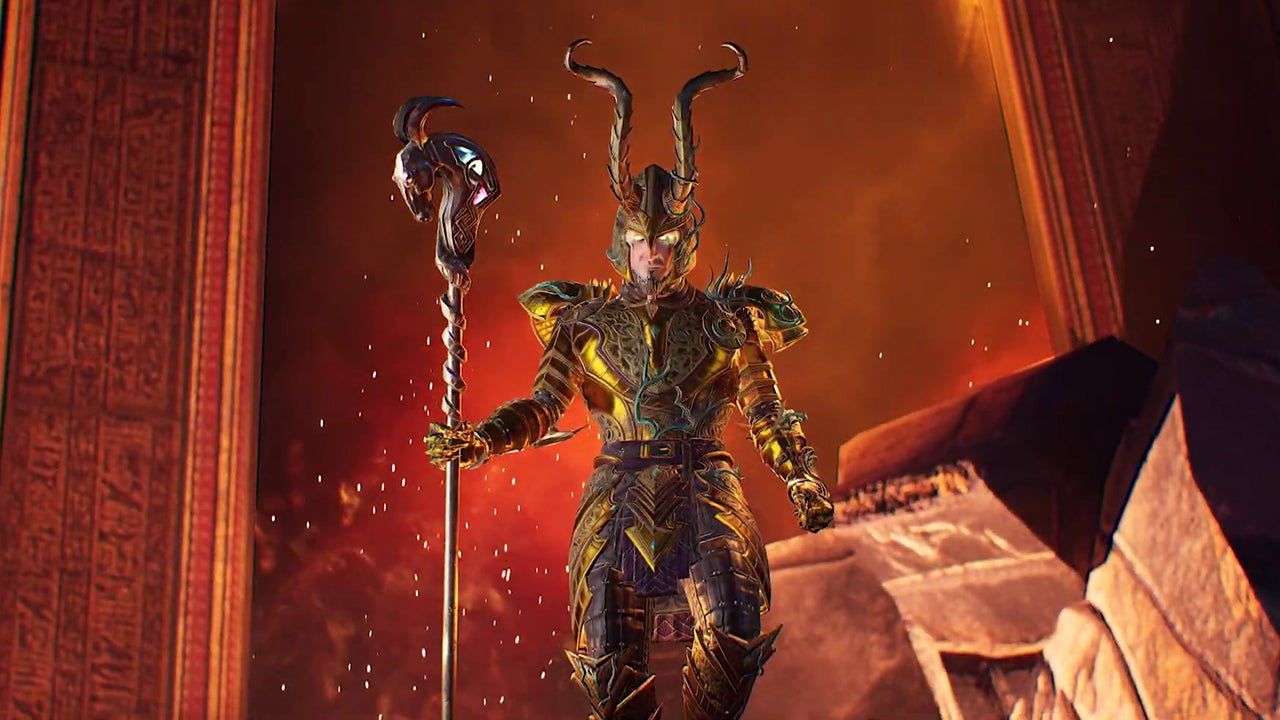
C-Smash VRS receives a free update in two weeks, adding co-op and new gameplay modes to the PSVR 2 exclusive.
Released in June after receiving a free demo, C-Smash VRS is a VR reboot of SEGA's Cosmic Smash, which mixes Squash and Breakout with a first-person perspective. Following a previous confirmation on Twitter, RapidEyeMovers and Wolf & Wood outlined some key features planned for this upcoming update.
The ultimate VR sports game is about to expand like the universe itself. With Co-Op, Infinity, AI Versus Bot, Emotes, @unkleofficial and more...
— C-Smash VRS (@Csmashvrs) August 30, 2023
The massive FREE update is coming on 14th September. Get the game at 25% off until then:https://t.co/kglxU9czq3@PlayStation… pic.twitter.com/3dPp4ZSptD
Detailed on PlayStation Blog, the update's highlights include 'Infinity Mode', which offers a dynamically generated arena that keeps changing with the music." Co-Op support is coming, though it's unclear how that will work. The music player lets you listen to the soundtrack, new levels are being added, there's a collaboration with UNKLE and more.
We had high praise in our recommended C-Smash VRS review, stating it "stylishly adapts this arcade classic for PSVR 2."
RapidEyeMovers and Wolf & Wood have done Cosmic Smash justice with this VR reimagining and I found C-Smash VRS successfully tapping into that "one more game" mindset. While Journey isn't a long campaign and the arcade-style gameplay doesn't have significant depth, there's strength in its simplicity that makes it an easy recommendation.
C-Smash VRS is available now on PSVR 2, while the content update arrives on September 14.
Note: This article, originally published on July 31, was updated on August 30 to reflect the release date confirmation.
 UploadVRHenry Stockdale
UploadVRHenry Stockdale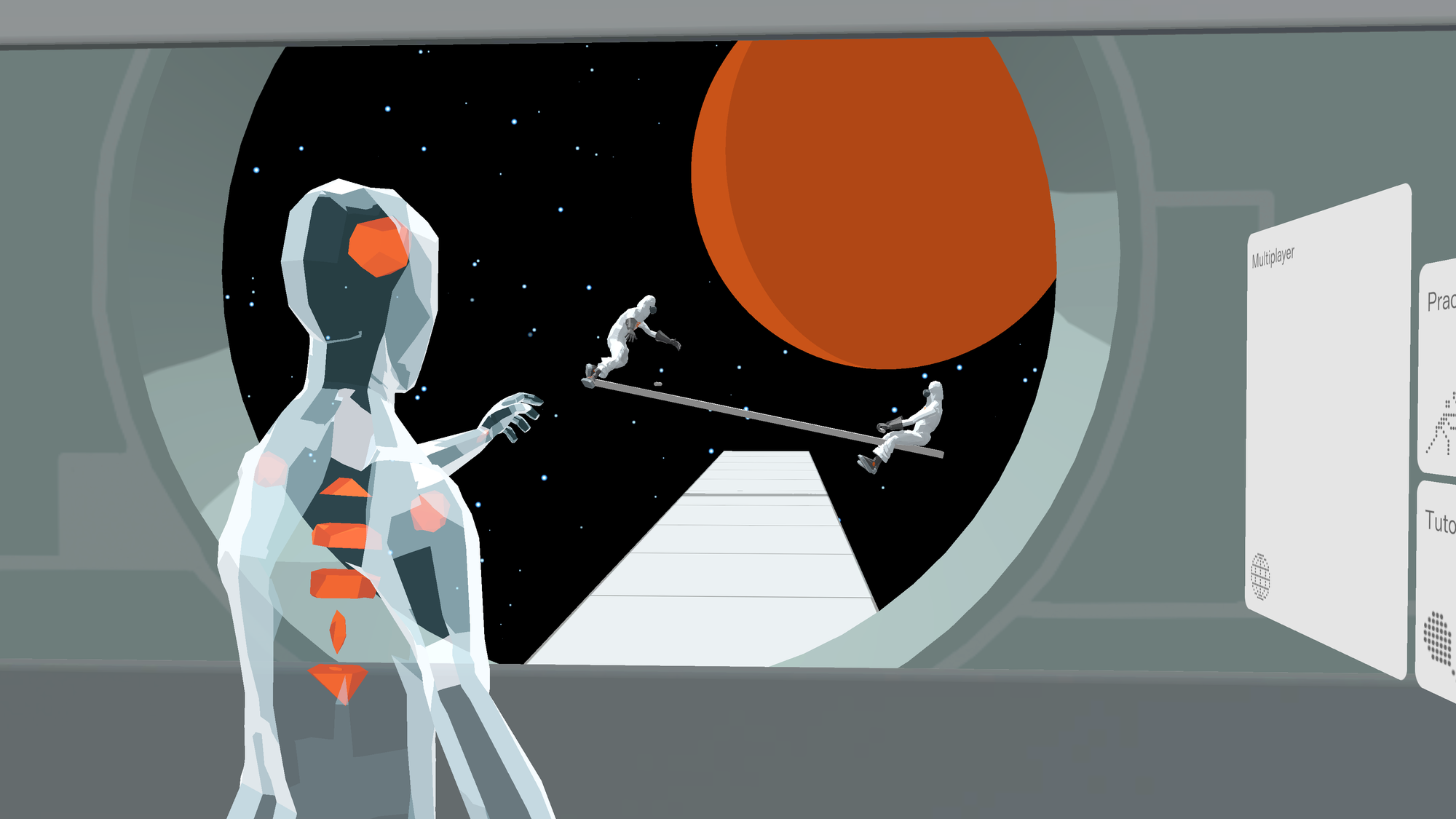
Fans of norse mythology, high fantasy, and mini golf are about to journey to the bright and woodsy elvish land of their dreams.
Walkabout Mini Golf opens the doors to its latest virtual reality mini golf course – Alfheim: Land Of The Elves -- on September 7th. Developer Mighty Coconut revealed the new paid 18 hole course with the following description:
Perfect your mini golf for an eternity with the unique curves, secret glens, undiscovered alcoves, graceful arches and sacred cathedrals of leaves amidst a gleaming, spiritual place untouched by time: Alfheim - Land of Elves. A hidden realm of light and beauty from Norse mythology, Alfheim is a serene and timeless course where you can play forever and—if you wish for magical powers, supernatural beauty, and you are ambivalent towards everyday people—you, too, can be an elf in this spellbinding and relaxing forest hideaway.
The new course is the latest in a string of impressive content releases from Mighty Coconut as the studio sharpens its artistic pipeline for new paid courses and content. Earlier this year, the company started pricing new course releases at $3.99 each while confirming content parity across PC VR, Pico, PSVR 2, and Quest headsets.
We've been charting the design progression with a series of tours hosted on YouTube with Mighty Coconut developers. You can check that out in the playlist embedded below beginning with Mighty Coconut's original course, Tourist Trap:
Building on its core physics-based gameplay since its 2020 release, Walkabout Mini Golf is building quite the catalog of courses to explore with its satisfying gameplay leading from lighthearted golfing to thoughtful treasure hunts set to the background of chill conversation with friends and family. Some of the recent DLC course releases include Myst, Upside Town, Atlantis, Labyrinth, and Temple At Zerzura, among many others.
For those unfamiliar, each Walkabout course is 18 holes set in daytime with an unlockable hard mode and re-designed holes set during night-time. Room codes and cross-platform multiplayer make it easy to get out onto the courses together and the Easter Egg hunts for balls and fox hunts for prizes can end up being more fun than golfing.
You can book mark our guided Walkabout course tours here and check out Walkabout Mini golf on the Quest Store, Steam Store or PlayStation Store.
 UploadVRIan Hamilton
UploadVRIan Hamilton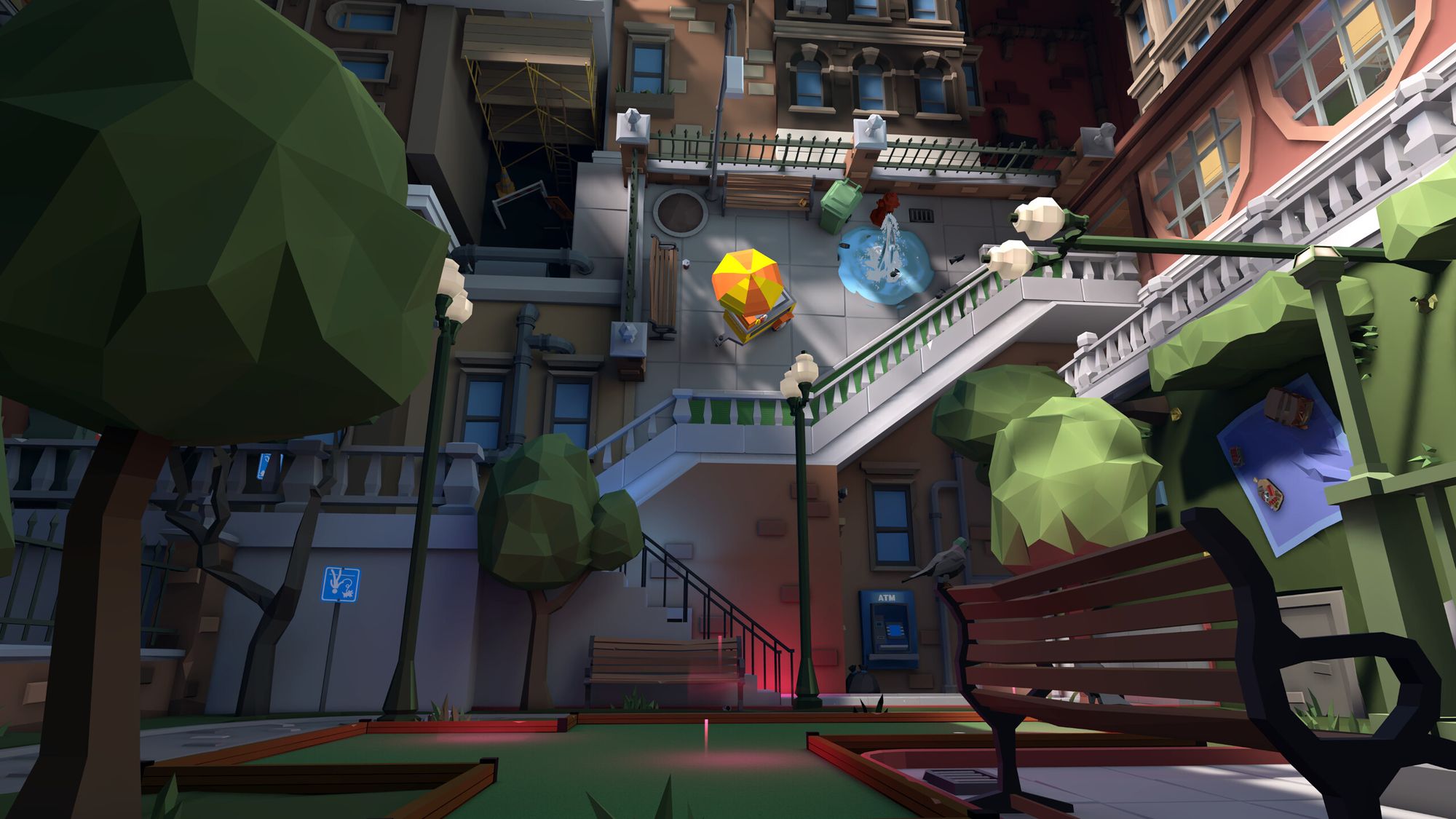
Glassbreakers: Champions Of Moss is Polyarc's new free-to-play competitive multiplayer game, arriving in pre-release today on App Lab for Meta Quest headsets. We went hands-on with the real-time battler last week at Gamescom and came away thoroughly impressed.
When Polyarc first teased its in-development multiplayer game Glassbreakers in March, we didn't quite know what to expect. From what we could gather, it looked to be some kind of Smash Bros-esque competitive game set in the Moss universe.
Admittedly, I wasn't bullish on any such game featuring a roster of returning and new 'Moss universe' characters. However, after trying Glassbreakers last week, I'm happy to report that this free-to-play title offers something much more enticing.
I told as much to Polyarc Co-founder and Design Director Danny Bulla after we played a Glassbreakers match together last week at Gamescom. "We've been grinding," he responded, with a nod.
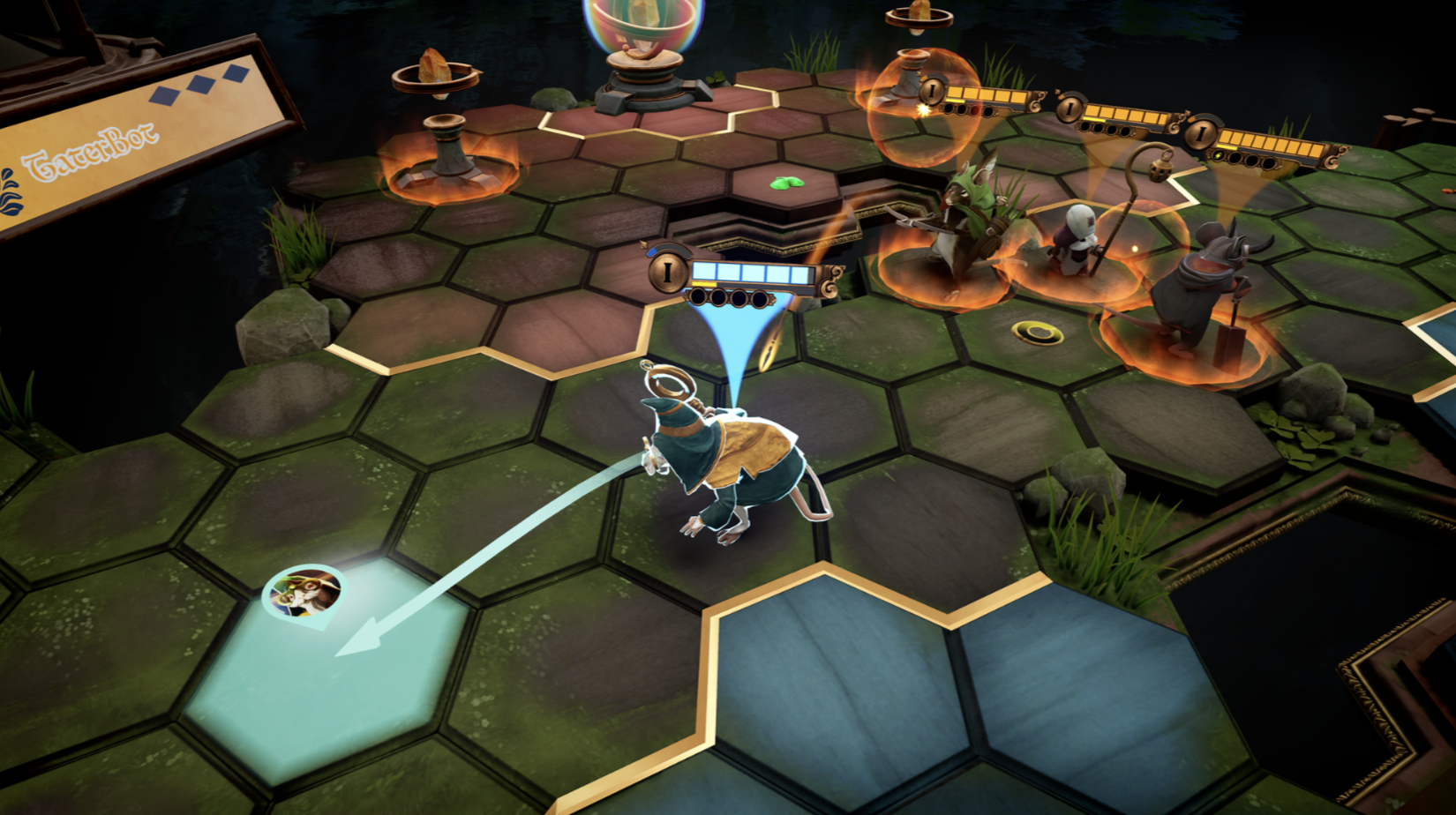
Polyarc publicly pulls back the curtains on Glassbreakers today, debuting a showcase segment that gives a first look at Champtions of Moss gameplay. While the initial concept art evoked a fighting game brawler, Glassbreakers is actually more like a hero-based, small-scale 1v1 MOBA reinvented for VR in the tabletop style of Demeo. And it all works really, really well.
First of all – don't be put off by the mention of the MOBA genre. There is some of that DNA here, for sure, but as a non-MOBA player myself, I found Glassbreakers took the best part of those mechanics and repacked them into something very accessible. It's easy to understand, designed for VR and seemingly deep in the potential levels of strategy, for those who want it.
It's made for short and sweet play sessions and, based off discussions with the development team, adopts a free-to-play that is seemingly incredible fair. Even more impressive, the game is an absolute sight to behold in headset. Performance was flawless and the visuals are stunning. The decision to make Glassbreakers a continuation of the Moss universe benefits less from narrative tie-in and more from the studio's ability to re-use and expand those games' top-tier environments, art direction and visual language.
So, let's dive into the nitty gritty.
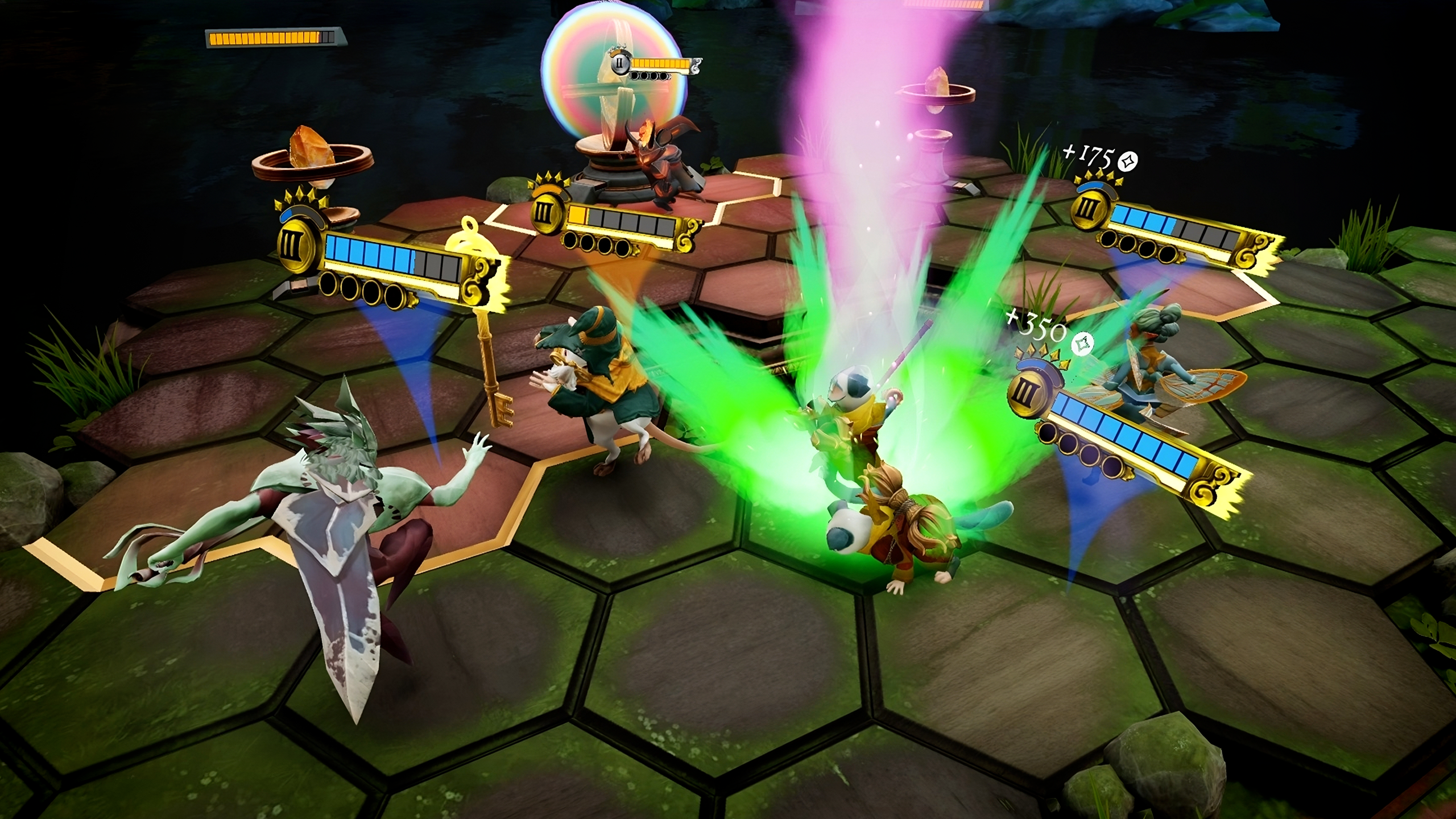
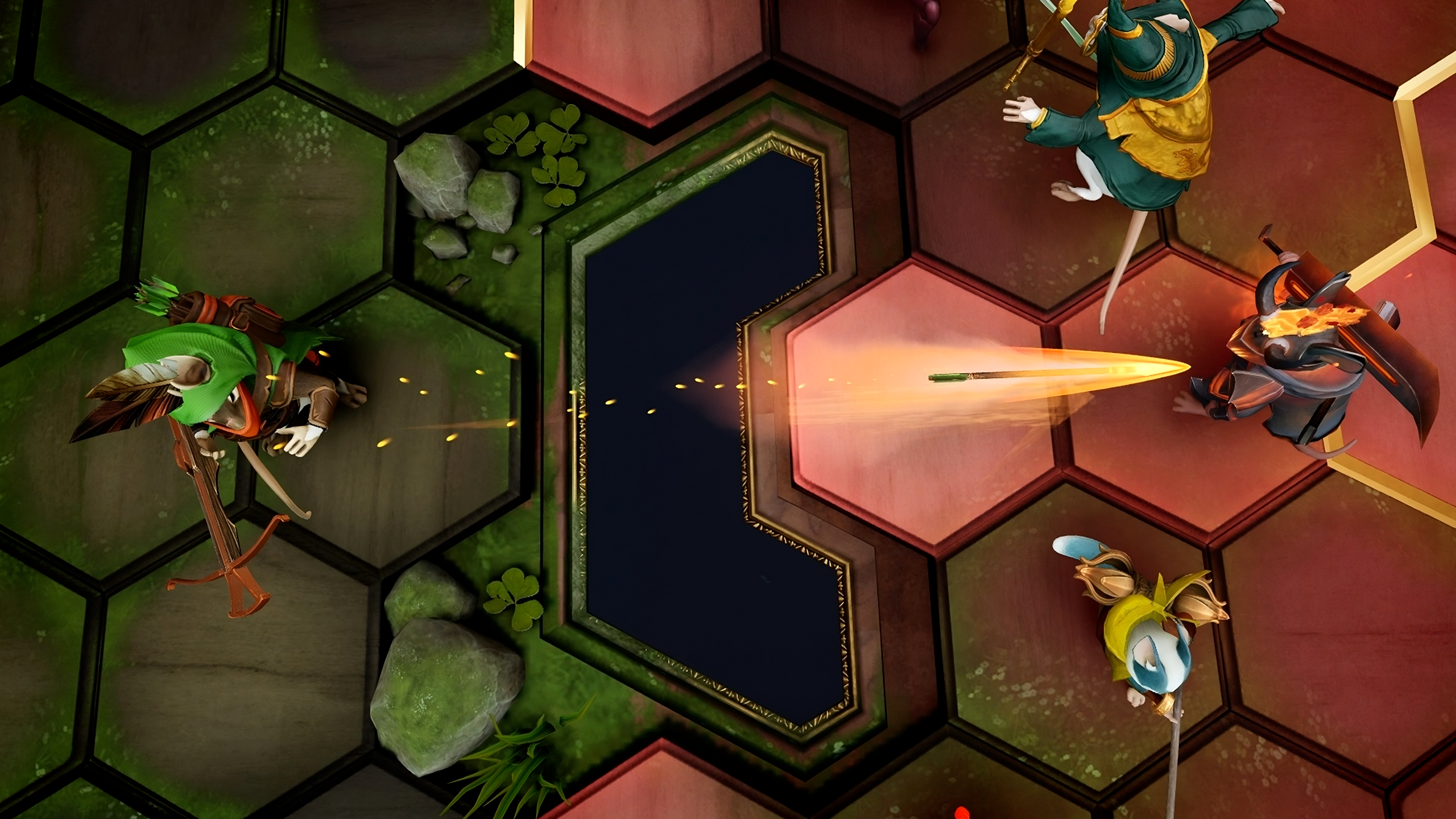
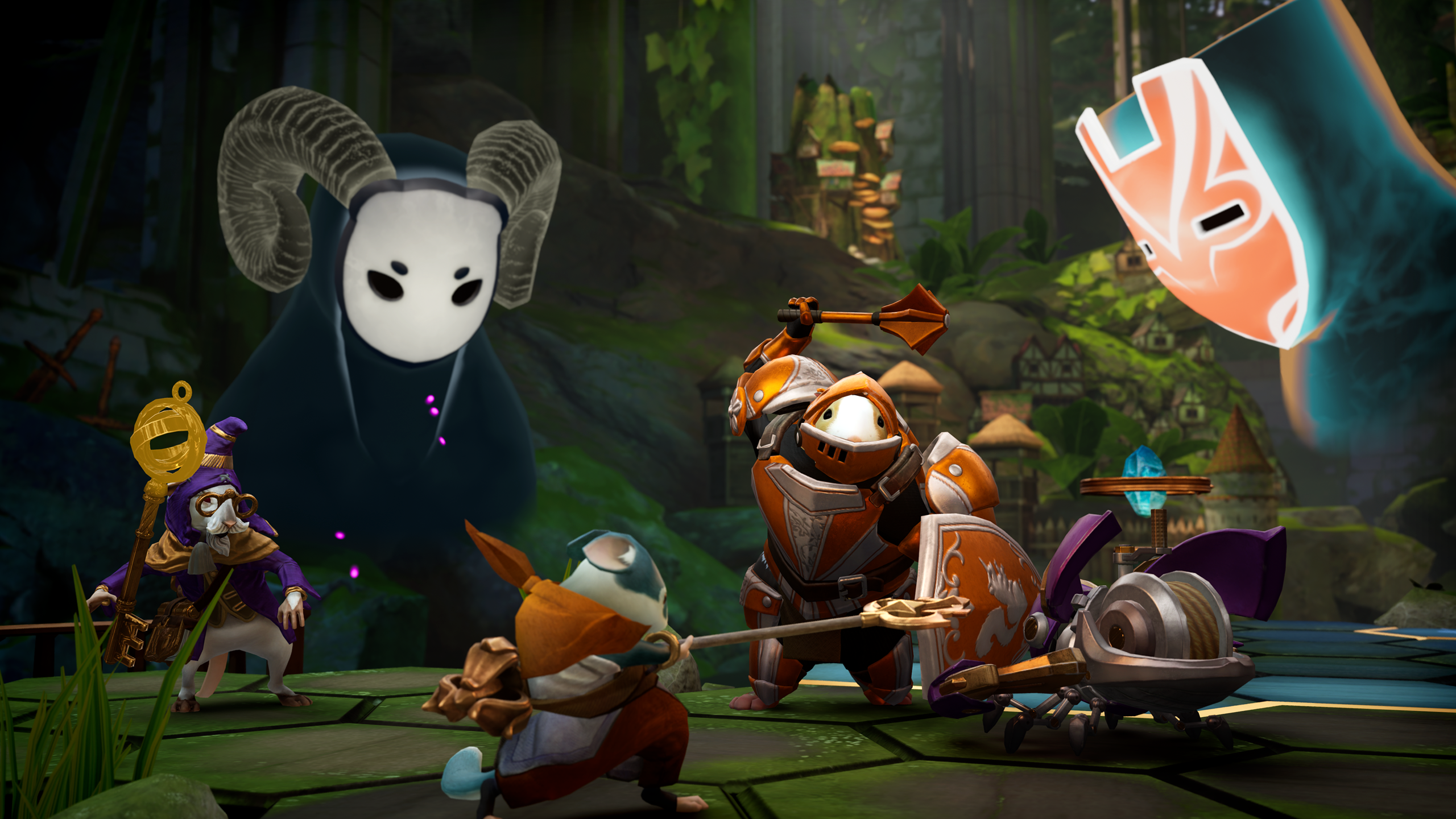
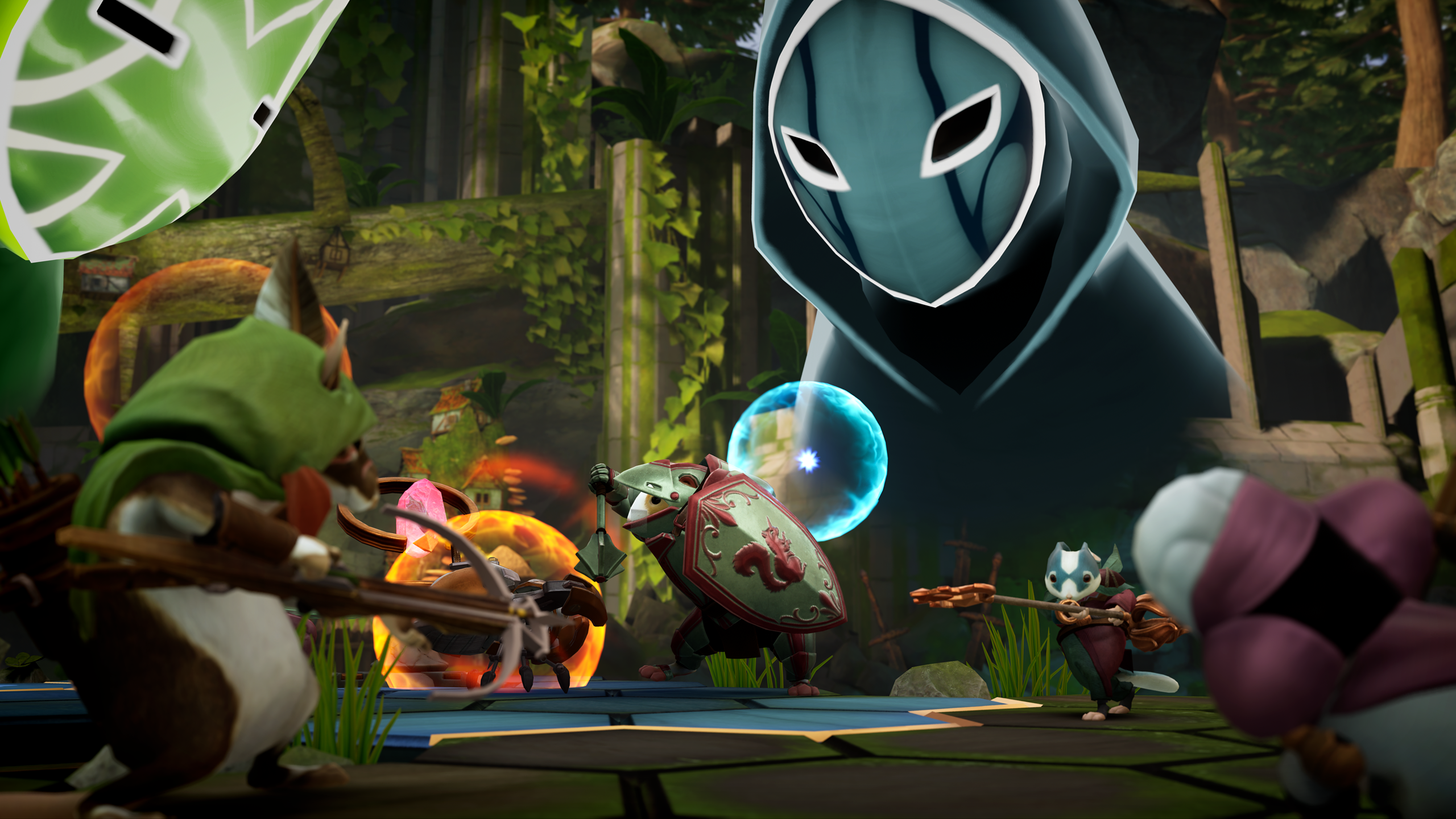
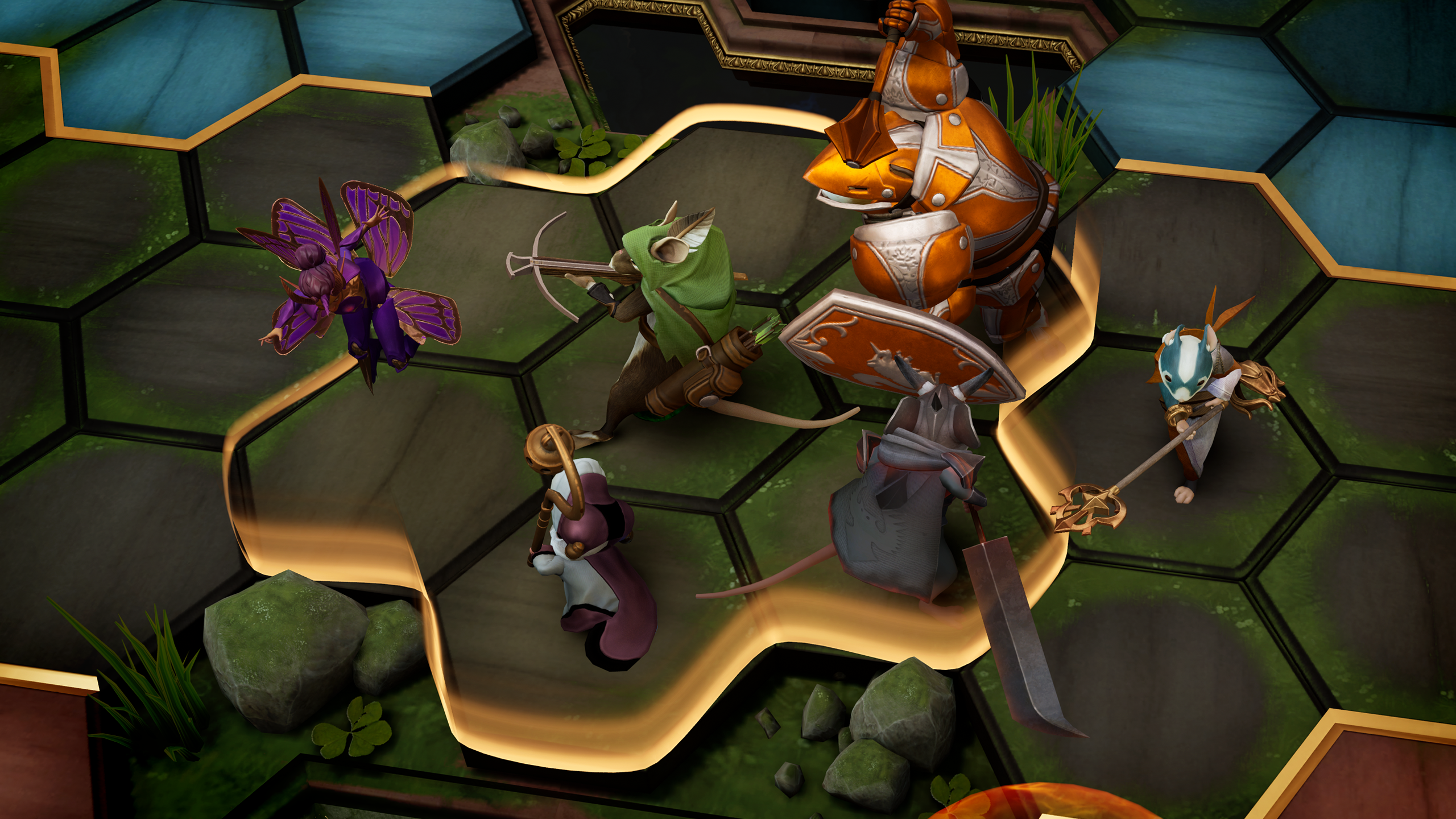
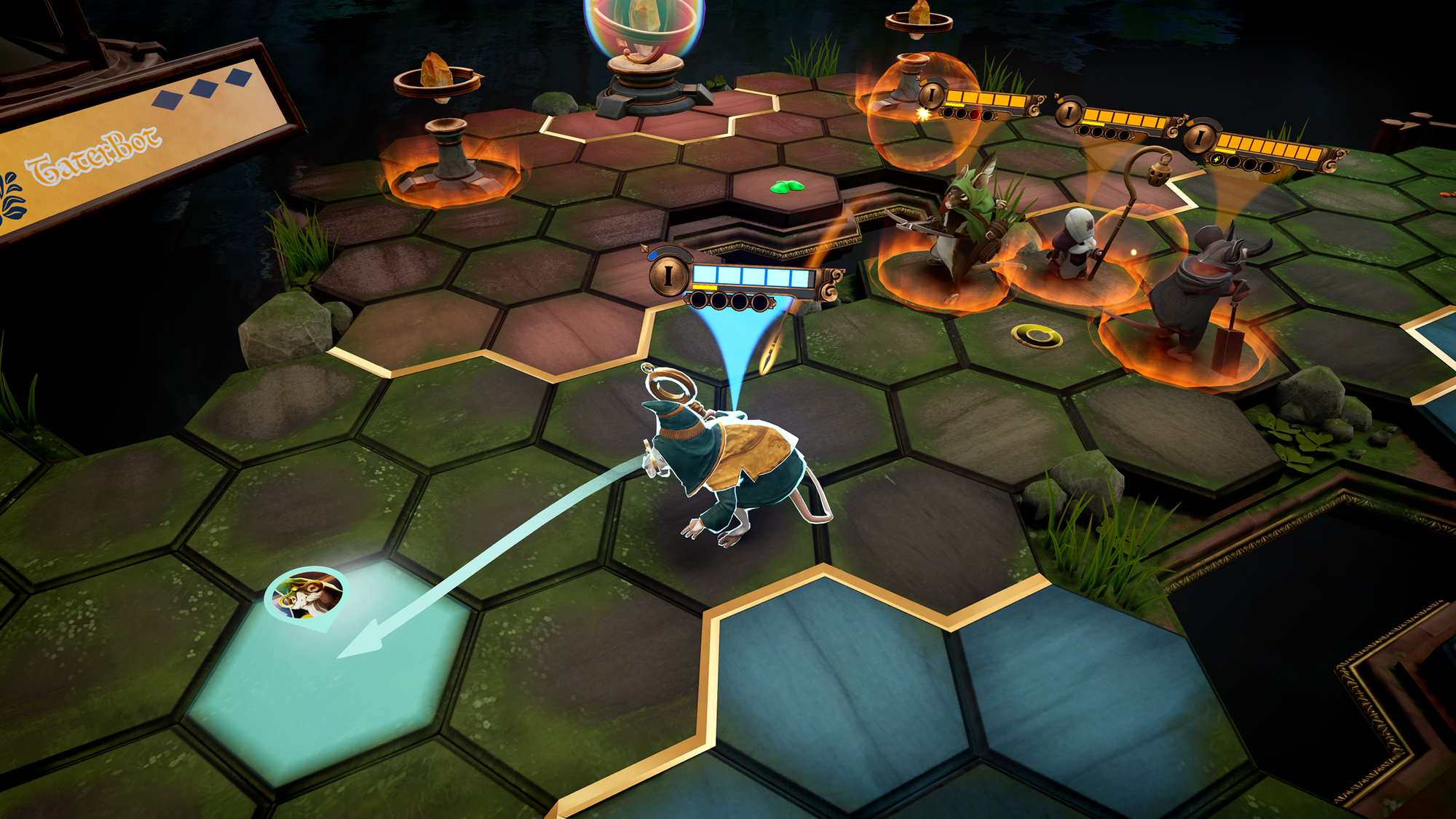
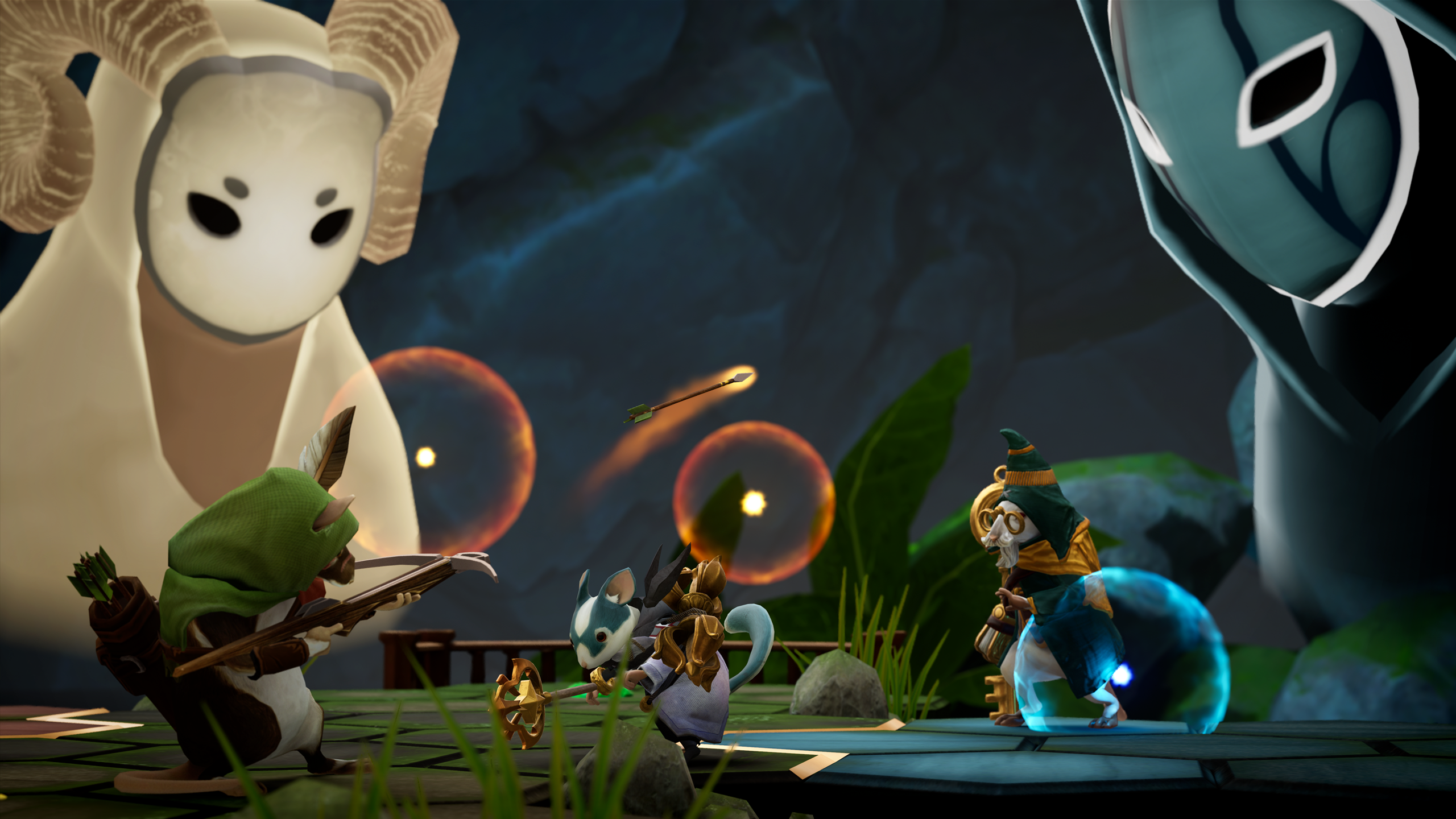
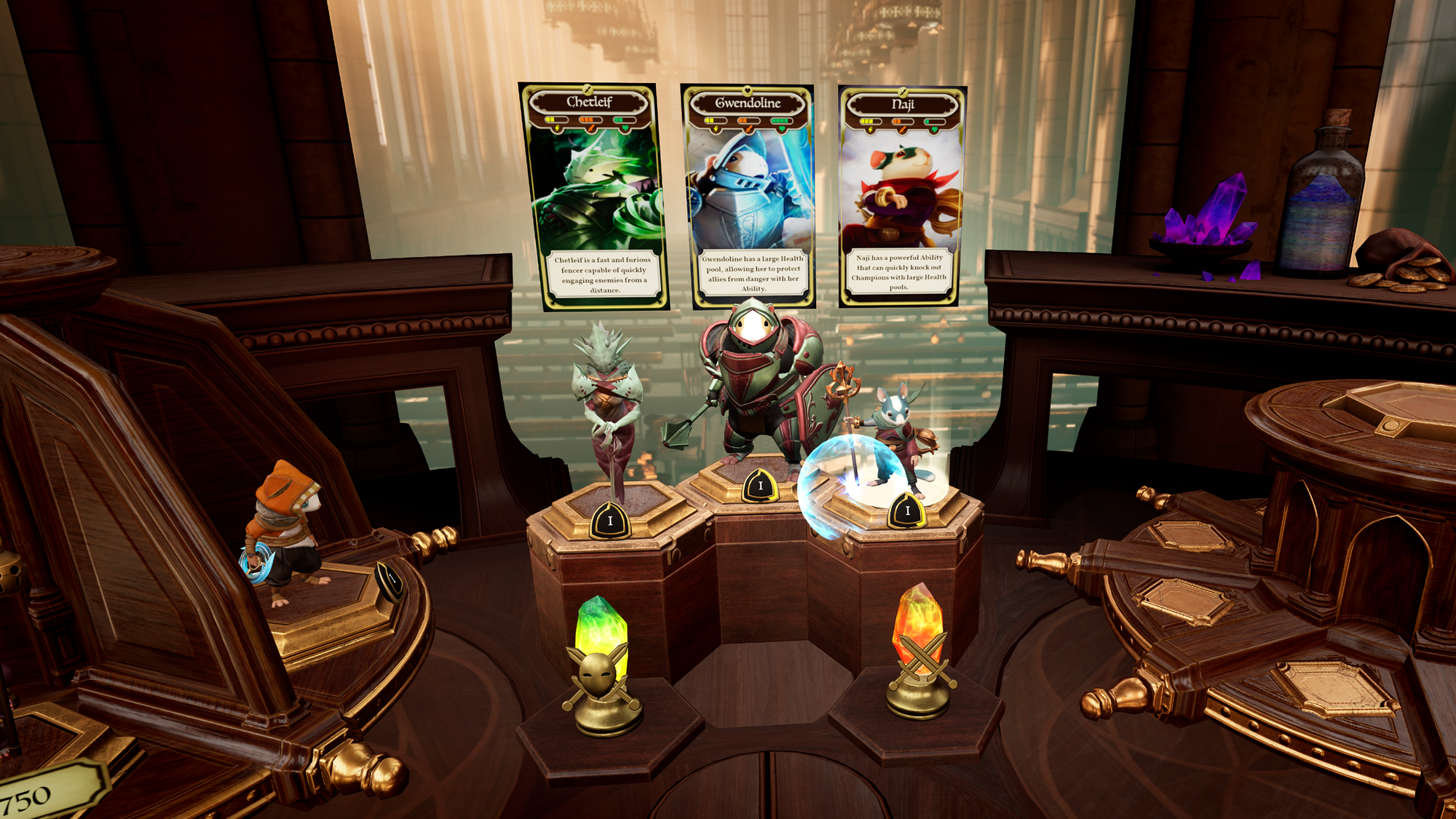
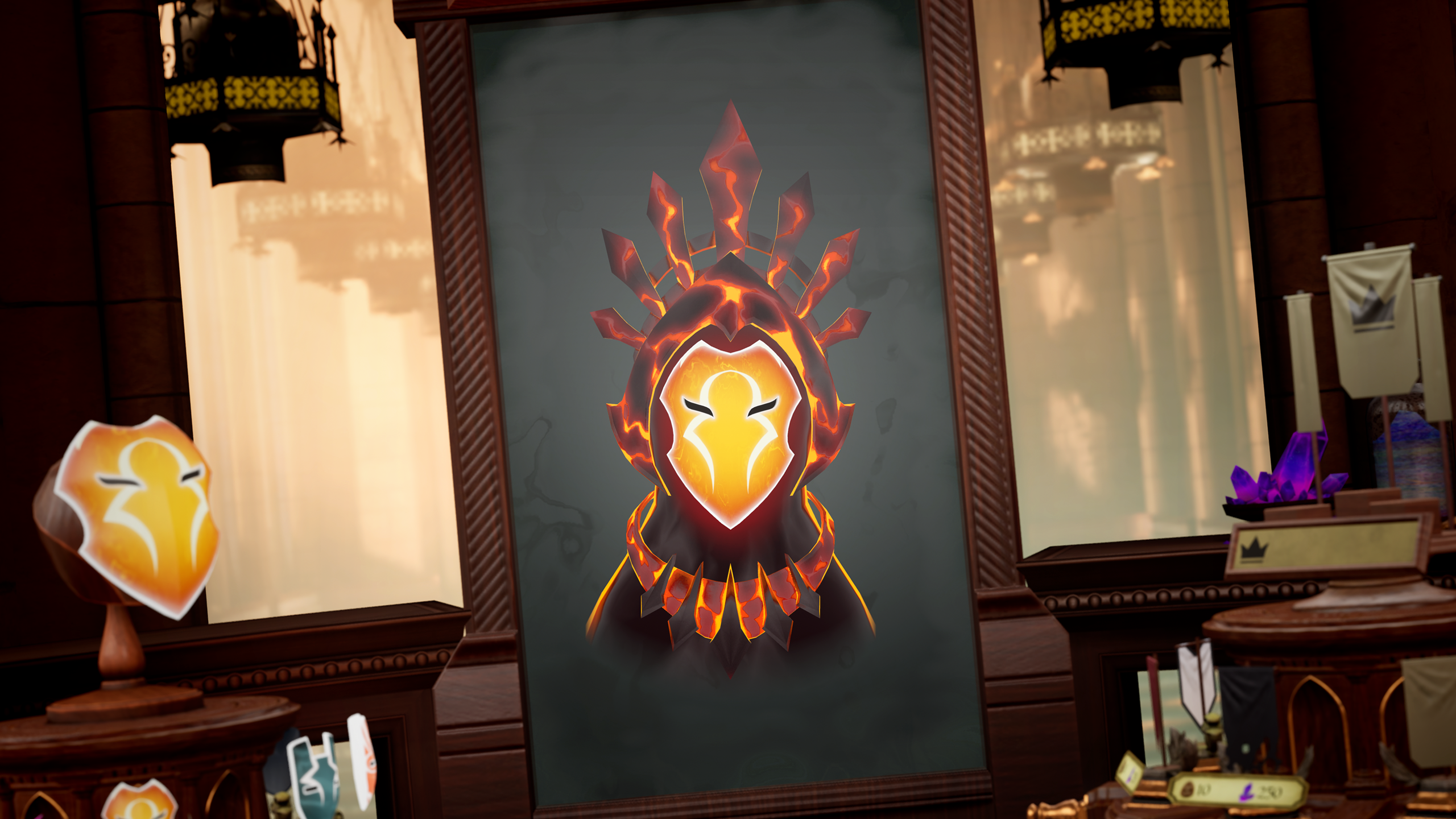
Glassbreakers matches take place across a Demeo-like tabletop board, where players will compete in public or private 1v1, 8-minutes battles. Players will use their squad to vye for strategic position, advantages or win conditions that end the match before the time is up.
Each player controls a squad of three heroes (Champions) in real time, selected at the beginning of the match from a roster of existing and new characters in the Moss universe. The pre-release game available on App Lab from today features a roster of seven initial Champions, each with unique abilities that can affect the battle or turn the tide. More Champions will be introduced gradually as part of a live service, free-to-play model – but more on that later.
When I sat down last week with Polyarc Co-founder and Design Director Danny Bulla, he passionately explained the premise of Glassbreakers' MOBA-inspired tabletop battles with ease. The mechanics are a lot to take in at first, but nonetheless fairly simple to grasp at their core.
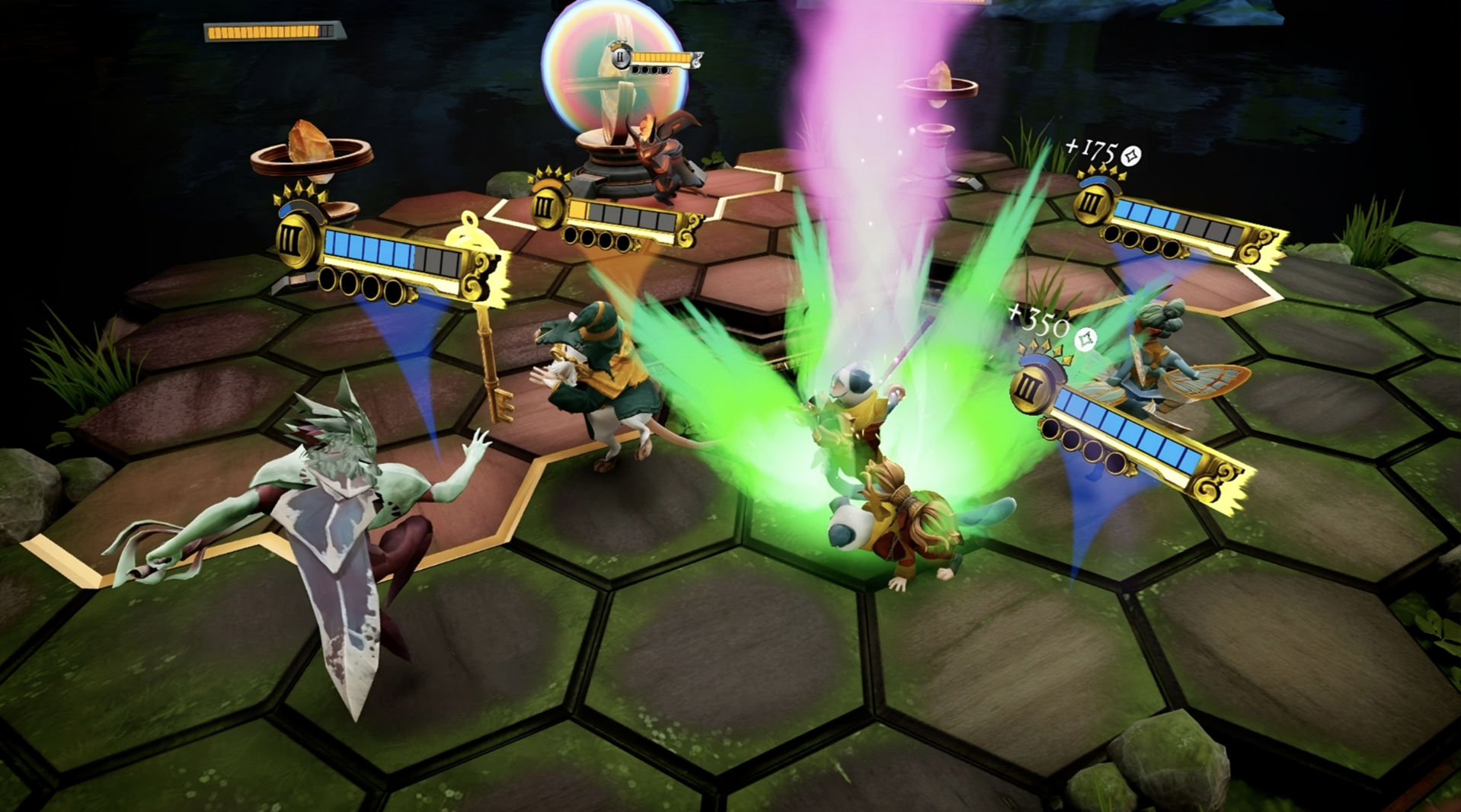
The elements that Glassbreakers adopt from the MOBA genre make for some fantastic real-time strategy moments with hopefully deep complexity as players improve. The playing field is not on the huge scale of a MOBA map with multiple lanes. Instead, it's a slightly-larger-than-Demeo tabletop battlefield, split into hexaonal tiles that Champions can be moved onto. You will need to pull yourself across the map with motion gestures, but it remains small enough in scale that the entire battlefield can be seen and assessed at all times.
The playing area contains several areas to compete for, which offer strategic advantages over you opponent. You'll need to position your Champtions carefully and choose where to attack or defend accordingly. The ultimate goal is to invade the opposing player's end of the board and attack their glass orb enough that it breaks – hence the game's title.
It's ultimately a fairly simple concept that requires smart positioning and understanding of each Champions's advantages, either by virtue of their class of their unique abilities. The short match length also feels like a perfect fit for those wanting quick VR sessions across a given week.
However, Polyarc understands that Glassbreakers is a VR game and so its mechanics – and strategy – have been design to account for the advantages and constraints afforded by the immersive medium.
It's something Bulla stressed to me during our match together: the game isn't just designed for VR, but uses it as a core twist to provide more strategic depth. Unlike a flatscreen game, you have a direct view of your opponent and their movements in real time during a match. You can essentially try to read your opponents head and hand movements in VR to predict their next move ahead of time, or feint a move yourself in the hope of drawing out a key resource from the opponent's arsenal.
This VR-only level of strategy immediately sets Glassbreakers apart. As one of VR's veteran and prestigious studios, it should be no surprise that Polyarc took this approach. However, it also sifts down past the strategy and into the game's interactions and menus as well.
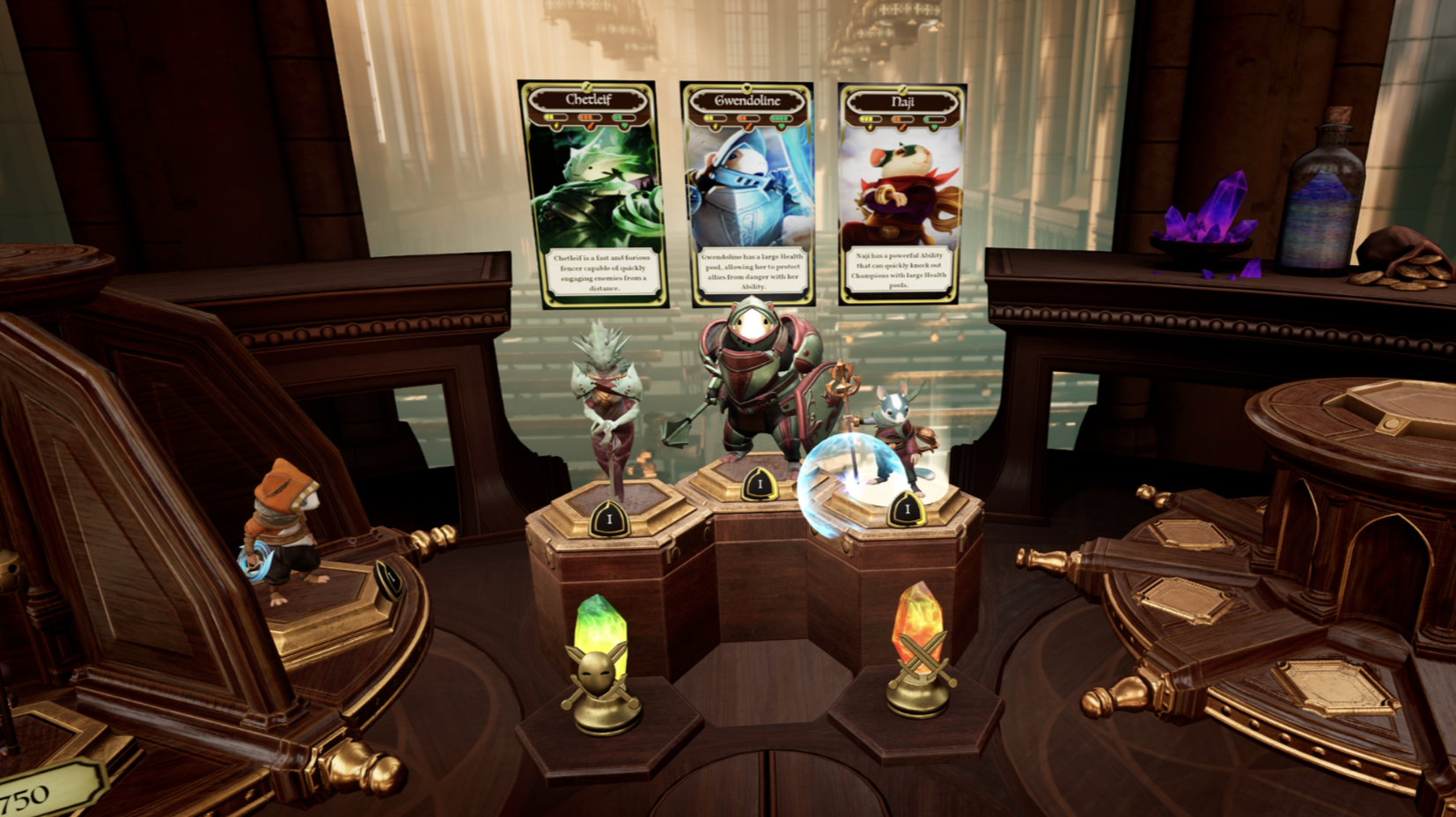
Easy-to-learn motion gestures convert otherwise tedious in-the-moment actions – like moving all Champions at once or retreating everyone back to heal – into intuitive, instantaneous commands. Likewise, the game's menus toss out flat screen panels and instead offer 3D systems that emphasize physical interaction and tangible objects to make selections or navigate options.
Instead of a battle pass or cosmetic options displayed on a flat screen, they're instead displayed as a series of 3D objects laid out on rotatable spindles in the main menu, pictured above. Hero selection is made by placing intricate figures on a podium, and every physical menu button looks intricately crafted and handmade for its purpose. There's barely a flatscreen, cursor-driven menu in sight – an impressive achievement given the tedious, menus-upon-menus approach assumed as standard in other live service systems.
Speaking off the free-to-play battle pass model, it's understandable that some players might feel hesitant about how Polyarc could monetize (and compromise) the game's strategic integrity with new Champion releases and paywalled content.
However, Bulla went to great lengths – and was happy to openly discuss – all the ways in which Polyarc want to ensure players this won't be the case.
With each season will arrive a new battle pass, which will include a new hero along with other cosmetics options for customizing heroes, in-game avatars and your player banners. It will be a familiar system for most – expect daily challenges and gradual progression across the season.
The most immediate concern to clear up is that while new heroes will be introduced as part of the seasonal battle pass, there will always be a path to unlock those heroes without offering up a cent of real-world money. Bulla stressed that Polyarc "are players too" and understand that locking strategic advantages behind a paywall would not be a popular choice.
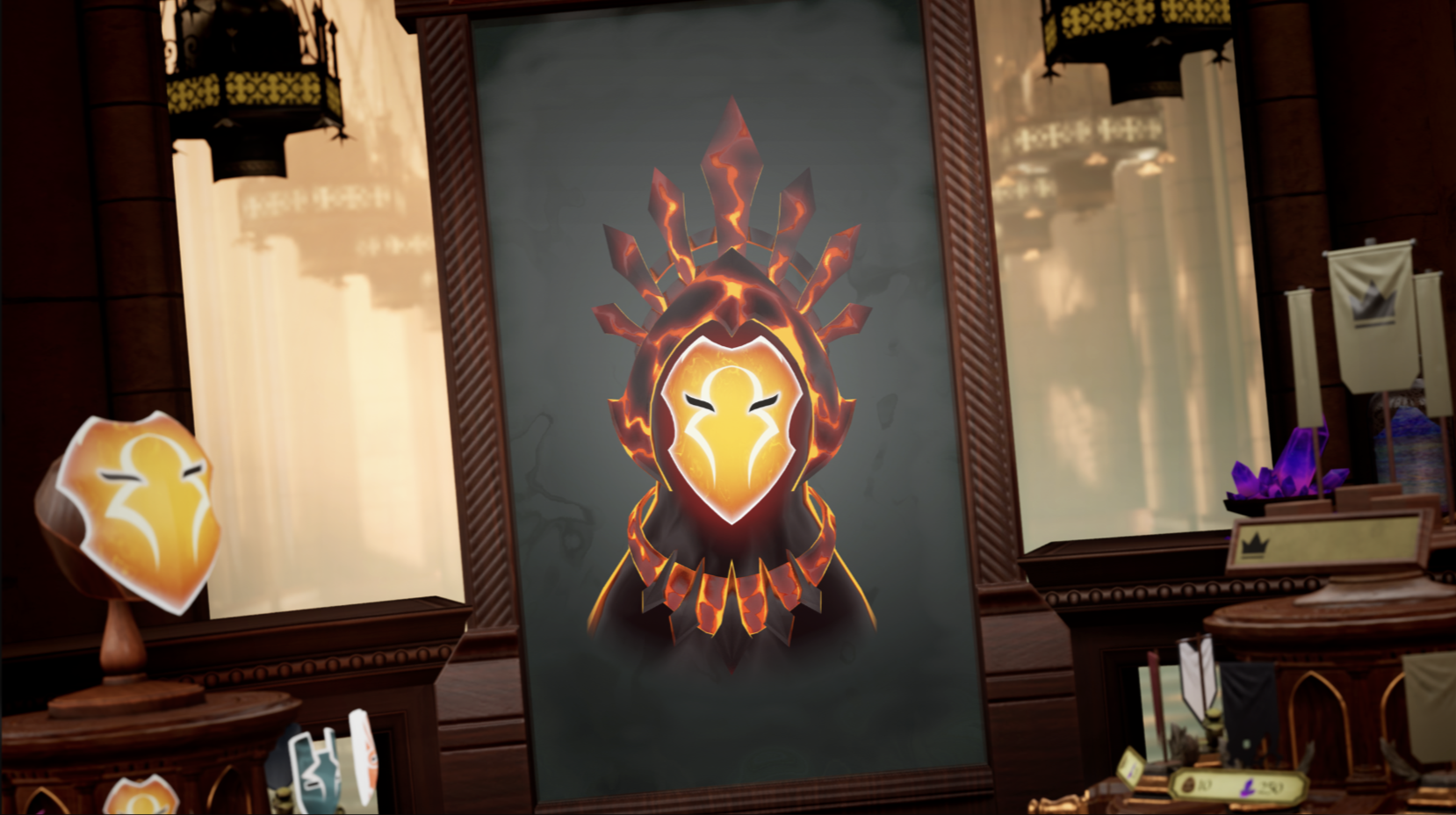
The game has three types of in-game currency, one of which will be purchasable with your real world cash as an in-app purchase. That can be then spent on the battle pass, which will have a free and paid track. Those that prefer to stay entirely free-to-play will still be able to unlock the paid track of the battle pass by using one of the other in-game currencies earned by playing.
The catch, of course, is that it could take you quite a bit longer to earn enough in-game currently to do so – and we can't be certain exactly how long that free-to-play grind might take just yet. The other in-game currencies can also be redeemed with a selection of standard cosmetics items available outside of the seasonal battle pass system as well. The cost of the battle pass (both in terms of in-game currency and its relative real-world cash cost) has yet to be decided, as has the exact length of each season.
On paper, my conversation with Bulla and my (limited) experience toying around with Glassbreakers' cosmetic and battle pass system leads me to believe that Polyarc is adoptiong a genuinely well-intentioned free-t0-play model. The ability to unlock content without paying real money is important and appreciated, as is the commitment to ensuring no strategic advantages or heroes get locked behind paywalls.
Bulla and I spoke about Marvel Snap, the new mobile card battler headed up by former Hearthstone Game Director Ben Brode at his new studio, Second Dinner. I noted that Snap is my personal touchstone for recent free-to-play models and Bulla mentioned that the game "took over" the Polyarc office at times during the last year – so no doubt the reception of Snap's economic model influenced Glassbreakers one way or another.
It's worth nothing that Marvel Snap is much more economically aggressive than it seems like Glassbreakers will be. There are hugely exorbitant (but entirely optional) cosmetic purchases in Snap, for example, and the system of card acquisition – especially with new cards featured in the monthly battle pass – is fairly grind-y by nature. Snap never truly throttles free-to-play players, but it does somewhat constrain them for a limited time, incentivizing battle pass purchases to unlock the shiny new card faster.
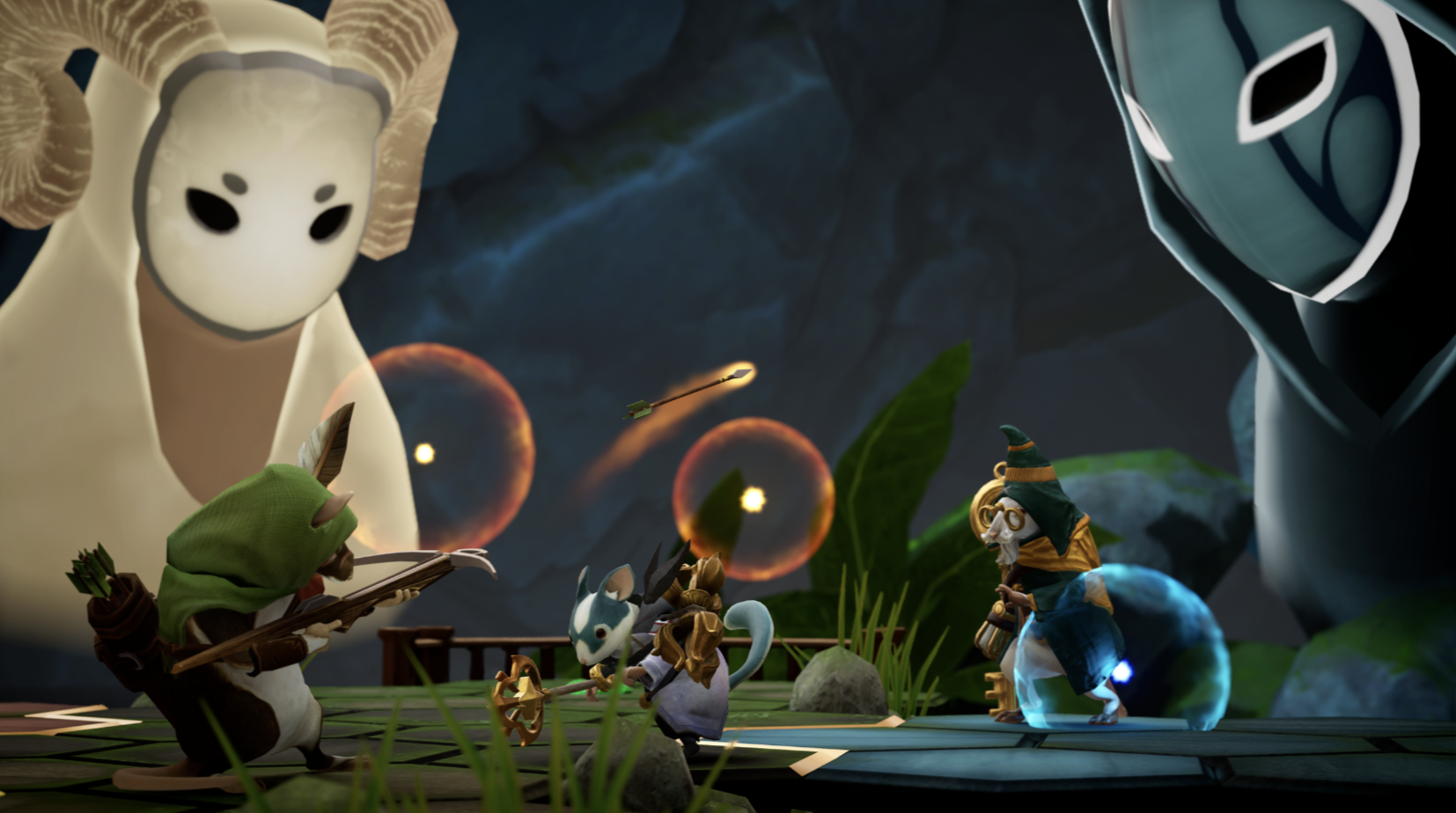
This is worth keeping in mind with regards to Glassbreakers and the remaining unknowns of its free-to-play model. We don't know how much longer it might take for a free-to-play player to unlock a new battle pass Champion compared to someone who pays, for example. Looking back at Marvel Snap, Second Dinner has a habit of making the monthly battle pass card a fairly attractive (and strategically powerful) proposition, enticing players to spend money. Polyarc may not be innately paywalling strategy by allowing players will eventually unlock new Champions for free, but it could effectively feel uncompetitive if that free-to-pay unlock path is lined with matches against paid battle pass players consistently sporting a powerful new Champion each season. The risk players take on with a free-to-play model is the goalposts are both unknown and moveable by developers at any point in time.
That said, that doesn't seem the intention Polyarc's intention with Glassbreakers. My conversations with the developers inicate that the Polyarc team does want the very best for players, while still ensuring there remains a path for them to rightly profit off this game that they have spent years developing.
The free-to-play battle pass model is also justified by a desire to get as many players as possible into the game without any initial cost. While there's more VR players than ever, it's still a relatively small market compared to flatscreen games – multiplayer titles will live or die on a healthy player population, matchmaking and queue times. Polyarc's proposed system seems like a fair compromise to achieve longevity with Glassbreakers.
If you want to decide for yourself, then you can check out the pre-release launch of Glassbreakers: Champions of Moss on Quest headsets via App Lab from today. Those who play Glassbreakers between today and September 4 can participate in a 'Bonus XP Event' that awards tokens, used for buying skin dyes, unique player masks, banners, and crests.
This is just the beginning for the game – a Steam release for PC VR is coming "later this year" and Bulla told me that the studio is taking a similar approach to headset platforms as it did with Moss. Start with one first, then gradually launch on others. We're looking forward to seeing how it does.
A pulled Amazon listing suggests Quest 3 might ship from October 10.
A screenshot of the Quest 3 page on Amazon Canada, which is unavailable as of this writing, showed a "Release date" of October 10.
We've reached out to Meta for comment on this potential leak, and will update this article if we hear back.
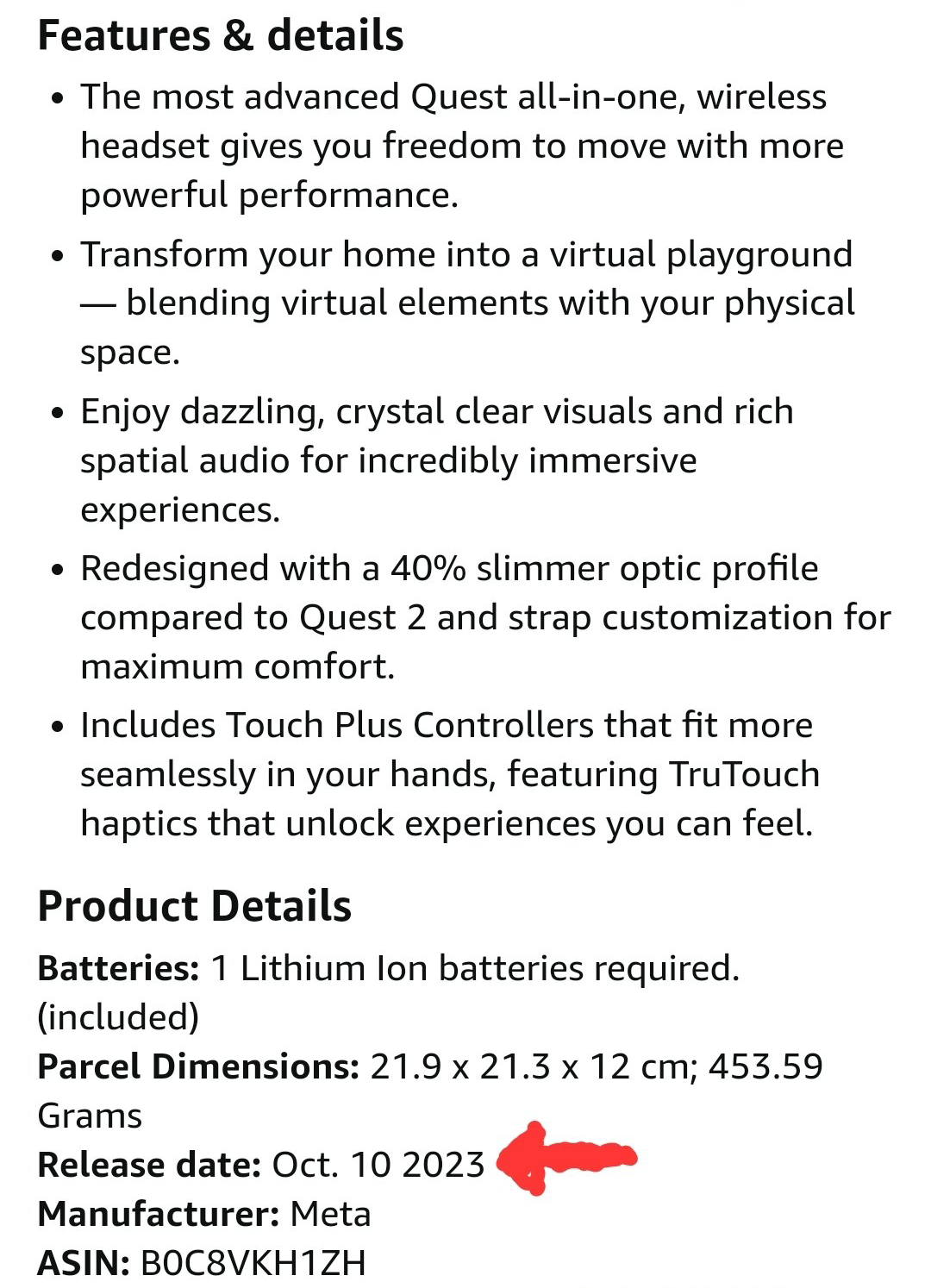
The 2023 Meta Connect conference is slated for September 27 this year. Meta announced Quest 2 and Quest Pro at Connect, and shipped each a few weeks after.
Quest 2 for example was announced on September 16 2020 and shipped from October 13, while Quest Pro was announced October 11 2022 and shipped from October 25.
That suggests Meta Quest 3 could be announced on September 27 this year and ship from October 10.
This isn't the first potential Quest 3 detail that's leaked from a premature retail listing. A Best Buy listing in June may have confirmed a previously datamined exact resolution figure, which Meta hasn't yet announced.
Last week an unofficial Quest 3 unboxing video was even posted anonymously to Reddit, revealing the package contents and a glasses support feature.
 UploadVRHarry Baker
UploadVRHarry Baker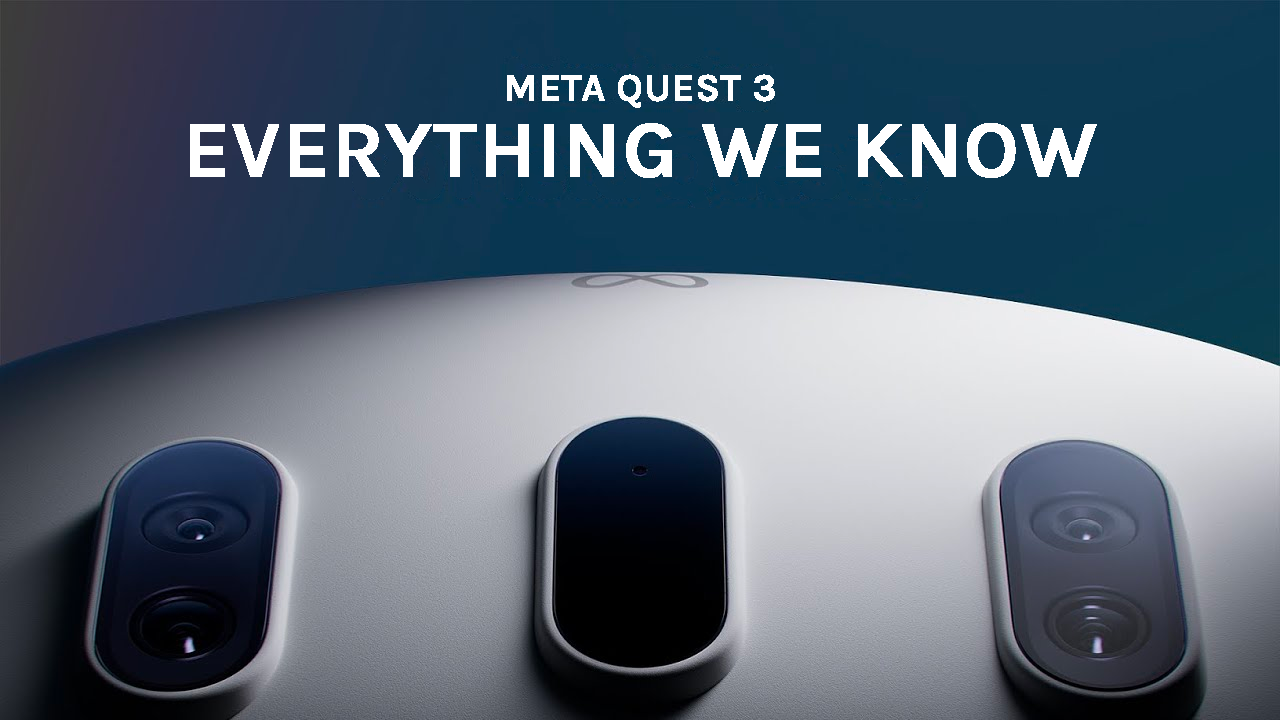
Meta has already officially confirmed some of Quest 3's specs and features, though.
The company says the visor is 40% thinner thanks to pancake lenses, the GPU is more than twice as powerful, and it has dual color cameras and a depth sensor for mixed reality with scene understanding.
The base Quest 3 model has 128GB storage and will be priced at $500. Meta has said there will be a higher storage tier too, but hasn't yet revealed how much storage it will have or its price.
For a summary of everything announced and discovered about Quest 3 so far, read our full specs & features roundup here.
Meta showed research which turns any flat surface into a virtual keyboard.
Mark Zuckerberg posted a video to his personal Instagram profile showing clips of himself and Meta CTO Andrew Bosworth trying a surface-locked virtual keyboard in a Quest 2 headset.
Zuckerberg claims he was able to achieve around 100 words per minute, while Bosworth says he reached 119 words per minute.
The average person types at around 40 words per minute on a traditional keyboard, whereas professional typists reach between 70 and 120 words per minute depending on their skill level.
Text input in VR and AR today is cumbersome, and significantly slower than on PCs and smartphones. Floating virtual keyboards require awkwardly holding your hands up and pressing one key at a time, providing no haptic feedback and preventing you from resting your wrist. Quest headsets support pairing a physical bluetooth keyboard for full speed typing, and some models are tracked, but this means you have to carry around a separate device larger than the headset itself.
If future headsets could turn any flat surface into a virtual keyboard, it would bring partial haptic feedback and allow you to rest your wrists as with physical keyboards, without the need to carry around a physical keyboard.
Developers can technically already build surface-locked virtual keyboards on Quest today, by using hand tracking and getting the user to tap the surface to calibrate its position. But in practice, even the slightest deviation of the virtual surface height from the real surface results in false key presses.
Meta didn't share yet exactly how its research solves this issue. However, fiducial markers can be seen on the desk in the clip. If the system is preprogrammed with the exact dimensions of these markers, this may act as a robust calibration system.
Quest 3 will add a depth sensor to a Meta headset for the first time, and a leaked setup clip shows the headset generating a 3D mesh of its environment. If this mesh is precise enough, Quest 3 could potentially eventually support this kind of virtual keyboard. For now though, Meta is solely describing this as research, not a demo of a near term product experience.
Meta will likely show off more of its VR and AR research at Meta Connect, which starts September 27 this year.
Venice Immersive is in Italy this week with dozens of VR and AR projects from around the world being shown. We'll be in attendance and have hands-on reports in the days ahead. What exactly is being shown? We've highlighted below six XR projects at the top of our list to check out.
Running from August 31 until September 9 for the public, Venice Immersive is the returning XR section for this year's Venice International Film Festival, following last year's rebrand. The festival also brought back the 'Venice Immersive World' on VRChat with a Worlds Gallery inside it.
Featuring 43 projects from 25 countries, 28 projects will officially compete in three categories judged by the Venice Immersive Jury panel. They'll select Venice Immersive Grand Prize, Venice Immersive Special Jury Prize and Venice Immersive Achievement Prize. There's a number of notable projects being shown, but Wallace and Gromit in the Grand Getaway might be the most widely known ahead of its release on the Meta Quest platform later this year.
You can find the full Venice Immersive program here. We'll have impressions of some projects in the days ahead, but here are six Venice Immersive experiences we're looking forward to trying:
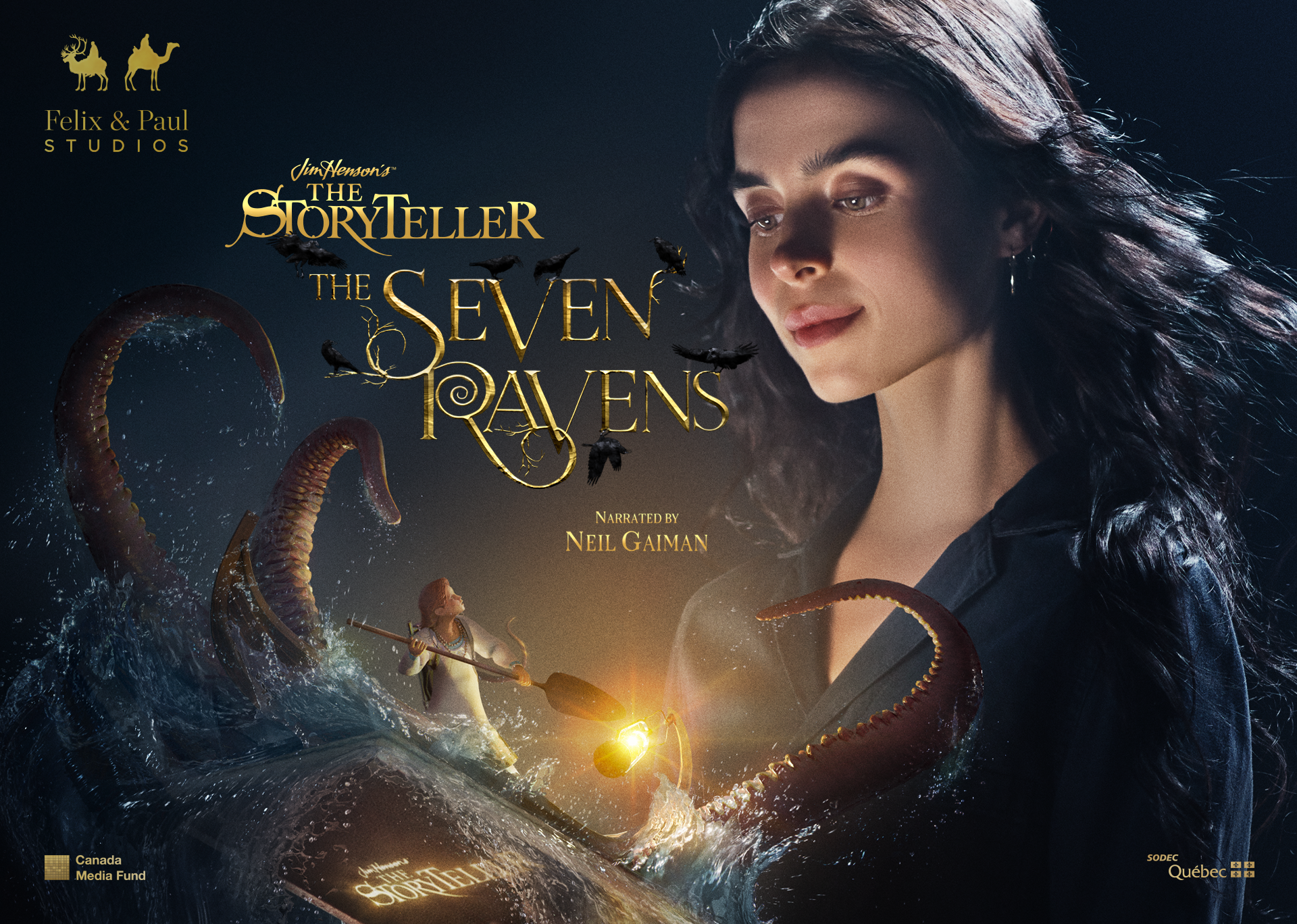
Based on Jim Henson's The Storyteller TV series, The Seven Ravens from Felix & Paul Studios brings an AR pop-up book to life with Neil Gaiman narrating.
Enter a realm of enchantment with Jim Henson's The Storyteller: The Seven Ravens, an augmented reality pop-up book that draws from advancements in AR to transport you to the heart of a timeless tale narrated by award-winning author Neil Gaiman. The magic of the fairy tale classic is reimagined through cutting-edge technology, creating a spellbinding experience that transcends traditional storytelling. Captivating visuals and interactive elements merge to bring the story to life.
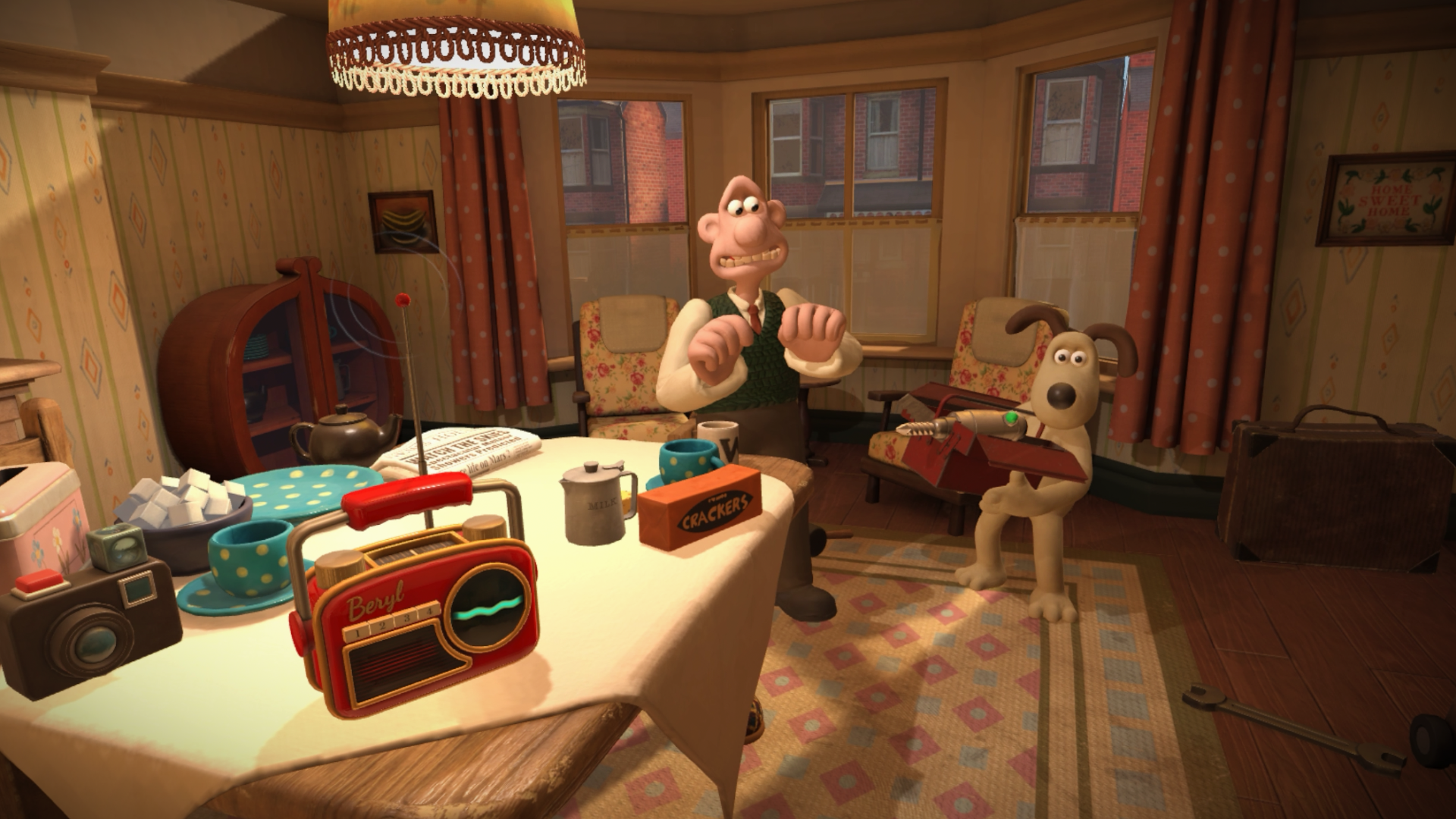
Co-developed by Aardman and AtlasV, Wallace and Gromit in the Grand Getaway brings the British duo to VR later this year. Here's the official synopsis:
Wallace and Gromit are excitedly preparing for a holiday! Sun, sand, and the chance to test out their latest contraption, Auto-Caddy. But Wallace has his dates mixed up – they have to be on the other side of the country in just half an hour! There’s only one thing for it… they’ll have to take the Rocket. Under the guidance of BERYL, the pair pack and prepare for take-off. But soon a mishap with the controls sends the team hurtling off course.
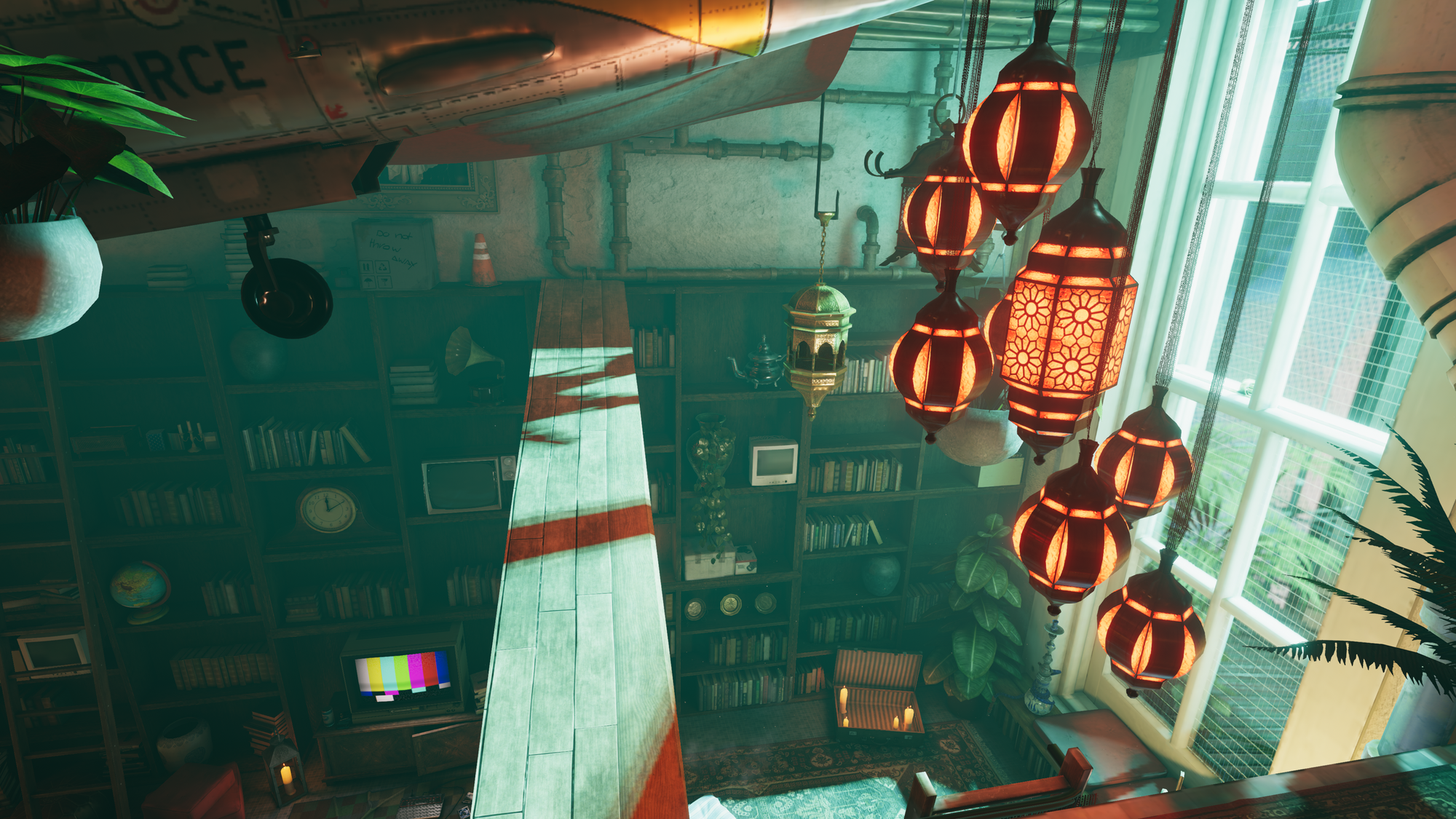
Created by Fins, Complex 7 brings a sequel to District Roboto through VRChat, and this sci-fi story sees robots and animals coexisting with no humans about.
Embark on a captivating journey through a city frozen in time. In this extraordinary realm, robots and animals harmoniously coexist, their lives unfolding in the absence of humans. As you navigate the bustling streets, a sense of wonder consumes you. Every corner holds a new discovery, every interaction with the mechanical and organic inhabitants reveals a fragment of their intriguing story.
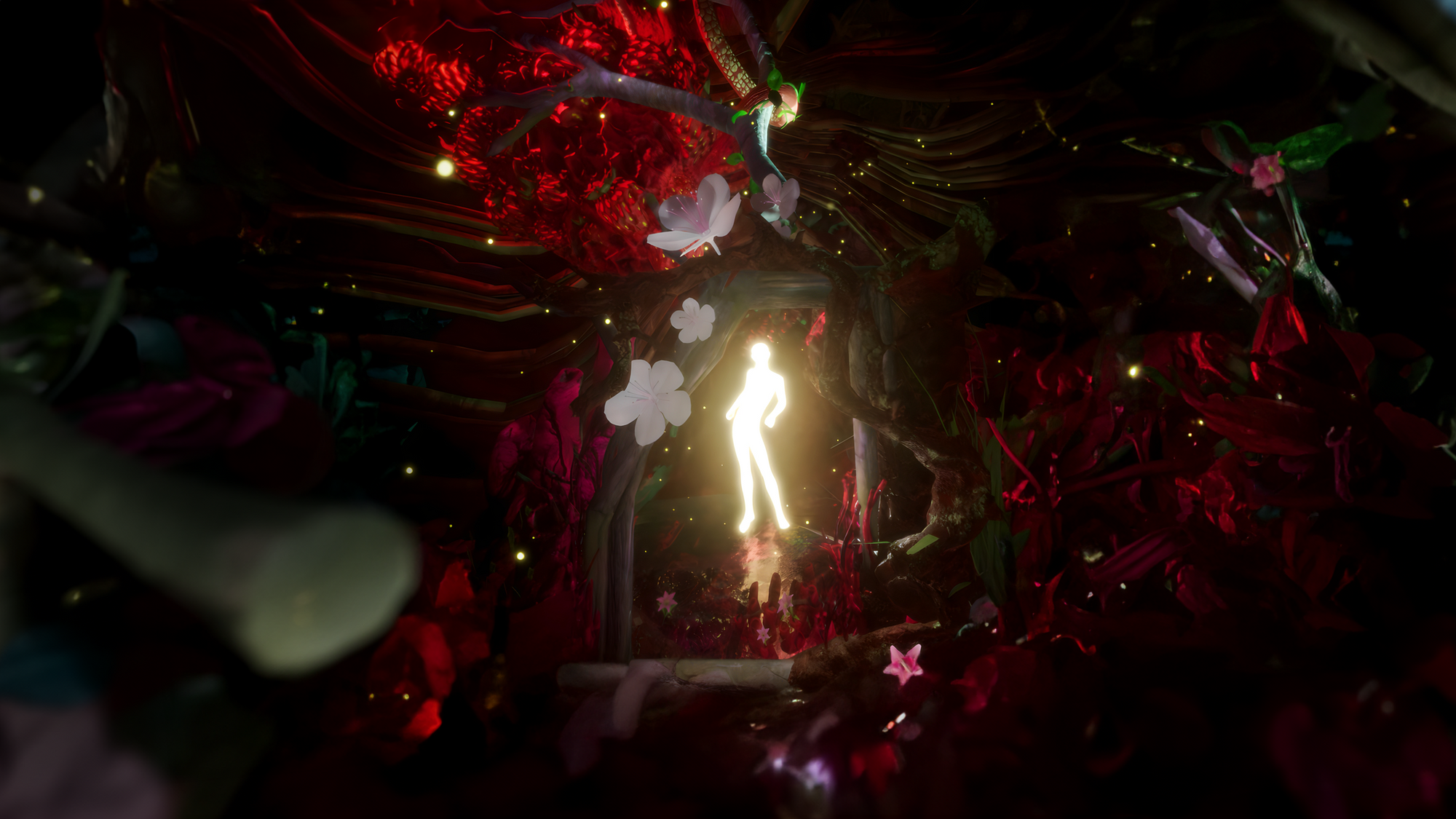
Created by Cameron Kostopoulos, Body of Mine aims to promote empathy for transgender people and a better understanding of gender dysphoria.
Body of Mine is a full-body VR experience that allows you to inhabit the body of another gender, where you can interact with your skin to discover stories and interviews with trans people. Combining body, face, and eye tracking with intimate stories of trans identity, the piece allows you to fully become another person, for an intimate exploration of gender dysphoria and our relationships with our bodies.
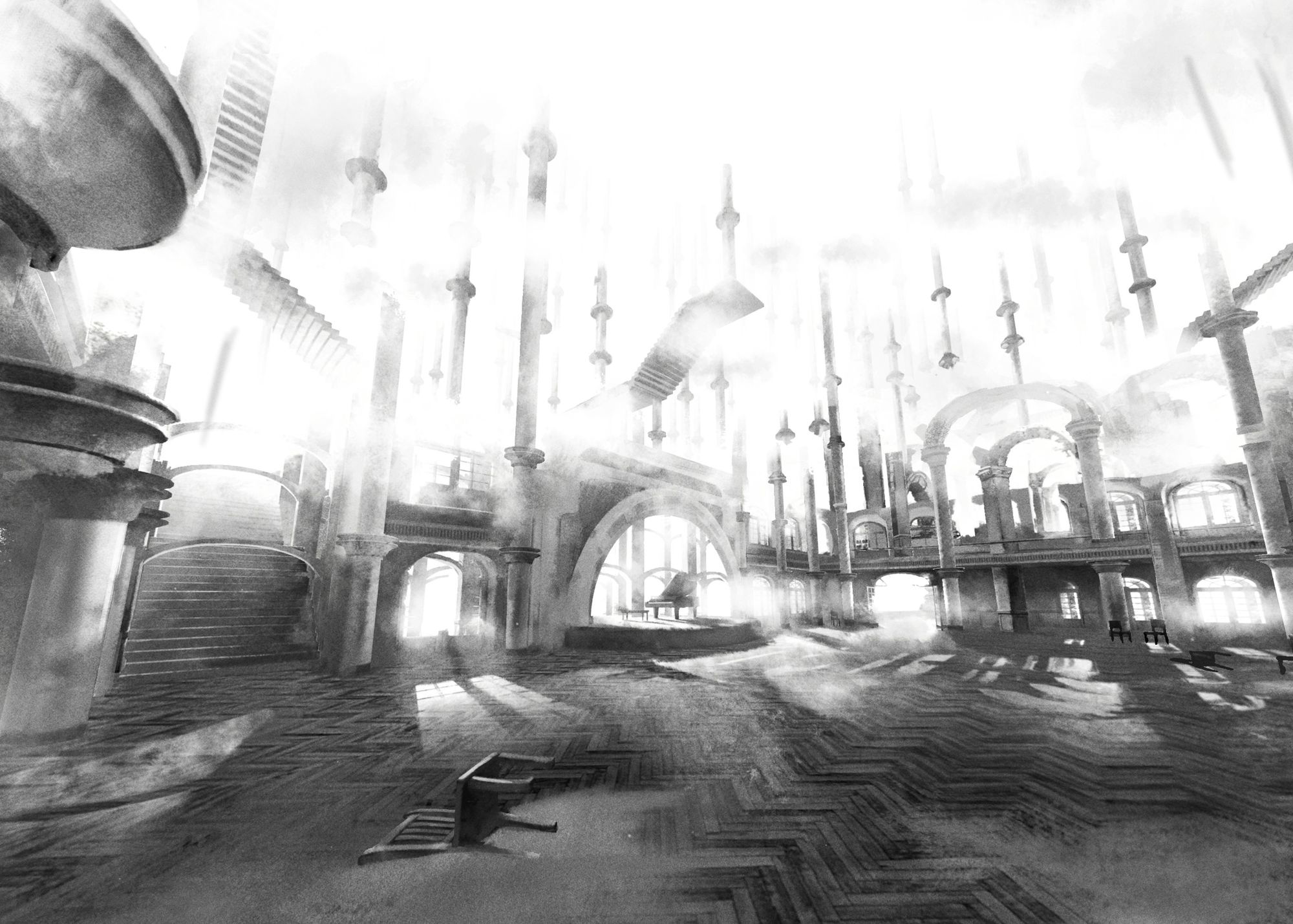
Created by Marion Burger and Ilan Cohen, Emperor based around a father suffering from aphasia.
EMPEROR is an interactive and narrative experience in virtual reality, which invites the user to travel inside the brain of a father who is suffering from aphasia. Alongside his daughter, we journey into the father’s mental space—imagined as a hand-drawn, monochrome landscape—as she seeks to learn more about his inner self, now obscured by illness.
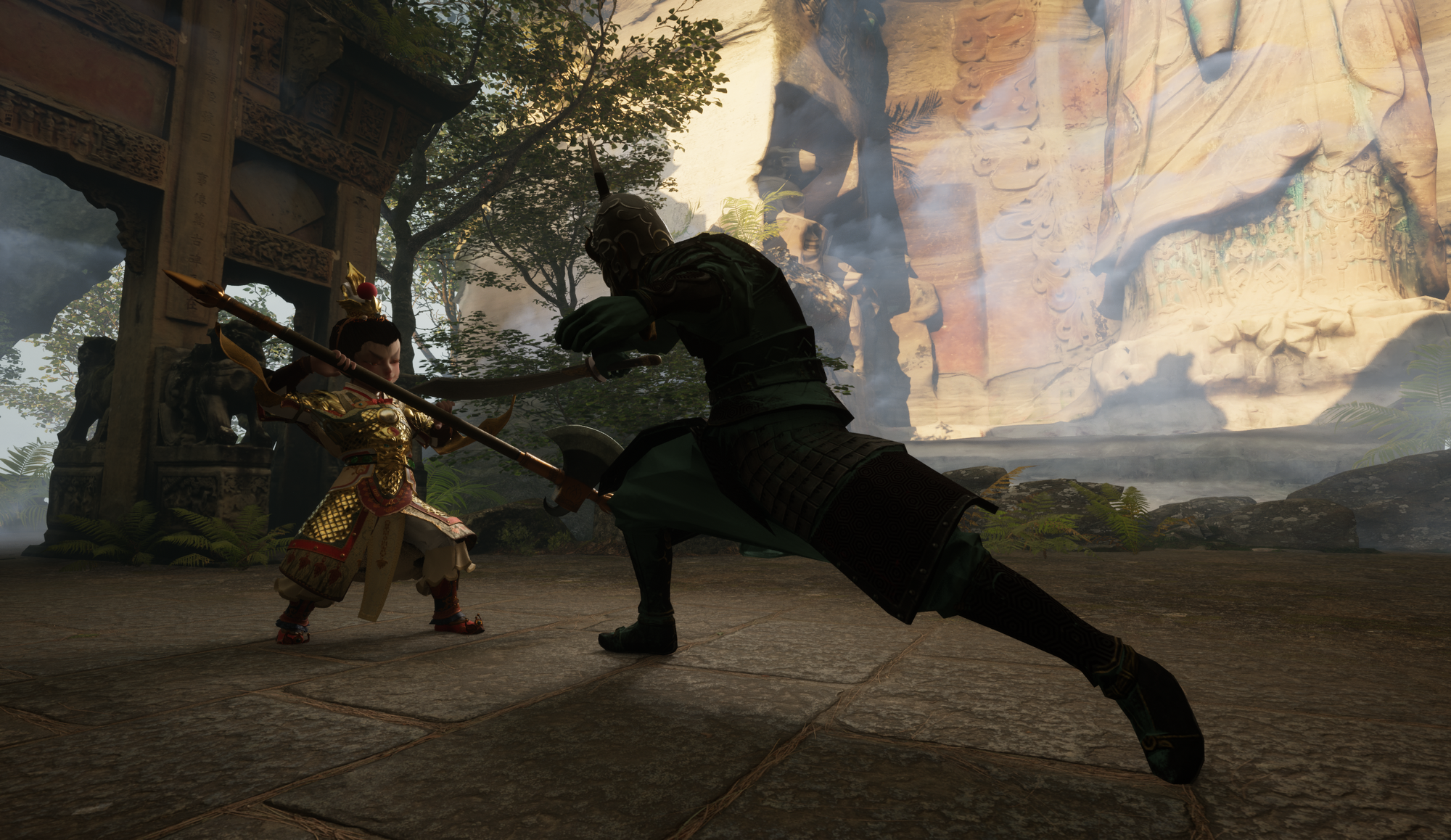
Created by Liu Yuejun, Wu Nanni, Shi Tao and Xu Jingqiu, Chen Xiang VR is a film based on ancient Chinese mythology.
A film adapted from the Chinese myth 'Chen Xiang Splits the Mountain to Save His Mother,' produced by UE 5. Departing from conventional, linear or parallel storytelling, we present the individual stories experienced by the protagonist, Chen Xiang, as blossoming flowers that unfold before the experiencer, enabling you to freely explore events unfolding in different times and spaces, and discover the elements that drive the story's progression, delve into novel narrative approach.
Behind The Frame: VR adapts the flatscreen narrative adventure, bringing Studio Ghibli-inspired visuals to Quest, SteamVR and PSVR 2 next month.
Developed by Silver Lining Games, Behind The Frame: The Finest Scenery first appeared two years ago and takes direct inspiration from director Hayao Miyazaki. Described as a 'paint-and-click' adventure, you follow aspiring artist Amber as she relives her past, navigating everyday life's hardships while focusing on finishing her masterpiece.
Painting isn't a particularly new concept in VR between apps like Paint Fiesta, Vermillion and Painting VR, but Behind The Frame: VR takes a considerably different approach with its narrative focus and puzzle solving. Here's the official description, courtesy of publisher Akapura Games:
Behind the Frame: VR is about an aspiring artist on the cusp of finishing the final piece of her gallery submission. Guide her brush strokes and solve a variety of puzzles to help complete her masterpiece; amid her brusque neighbor's gaze and his pesky cat. As her painting starts to take shape, uncover an emotional tale of chance and artistry revealed behind unrelated yet familiar moments.
Behind The Frame: The Finest Scenery VR arrives on September 14 for SteamVR, Quest and PSVR 2.
Meta has opened a closed beta of Horizon Worlds on smartphones, and the first footage has emerged.
Horizon Worlds is Meta’s “metaverse” platform. It works similarly to Rec Room, allowing users to create their own social games and experiences inside VR by using controllers to place & manipulate shapes, with a visual scripting system to add dynamic functionality.
In early 2022 Mark Zuckerberg told investors Horizon would launch on smartphones later that year, but that didn't happen. Meta's metaverse VP Vishal Shah told a journalist last month that original version of the mobile app "was a little bit too much of a VR game on mobile as opposed to a mobile-native experience", so the company rebuilt it instead.
Meta now lets you apply to join the waitlist to try Horizon on mobile, and it seems to already be letting some users in. X user Luna posted footage, which they told UploadVR they captured after discovering they had access in the Meta Quest app on their Pixel 6a:
The registration site FAQ confirms Horizon on Android phones is available through the existing Meta Quest app, not a new app, and states early access of a web-based version is also coming soon, if it hasn't started already.
Meta CTO Andrew Bosworth officially referenced a web version of Horizon in mid 2022, and teased a screenshot at Meta Connect in October.
That web based version is, according to the FAQ, the only way for iPhone users to access Horizon. That's potentially due to Apple's rule against apps acting as game platforms, the same rule also prevented Xbox streaming launching as an iPhone app.
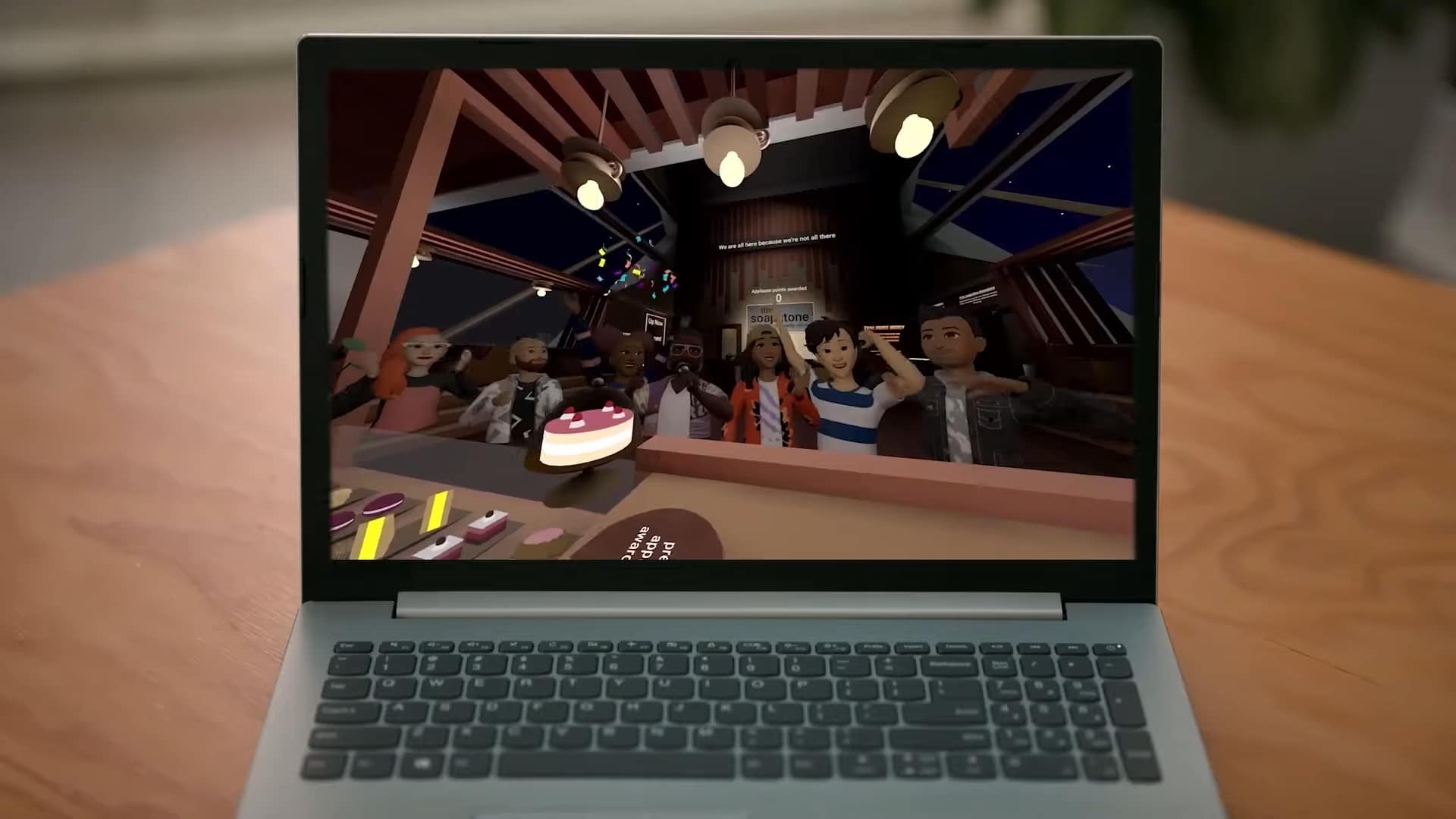
For both mobile and web this doesn't appear to be the full Horizon experience of accessing arbitrary user generated worlds. Rather, world creators seem to have to specifically support mobile devices.
Super Rumble, the shooter from Meta's new first party studio Ouro Interactive, is the first world available on mobile and web. It's also currently the only Horizon world to leverage the platform's upcoming next generation creator tools, 3D asset importing and TypeScript.
Interestingly, the Meta Avatars on mobile in Luna's footage show running legs while moving around, while the VR players in the session continue to lack legs, despite Meta announcing legs as coming soon almost a year ago.
 UploadVRDavid Heaney
UploadVRDavid Heaney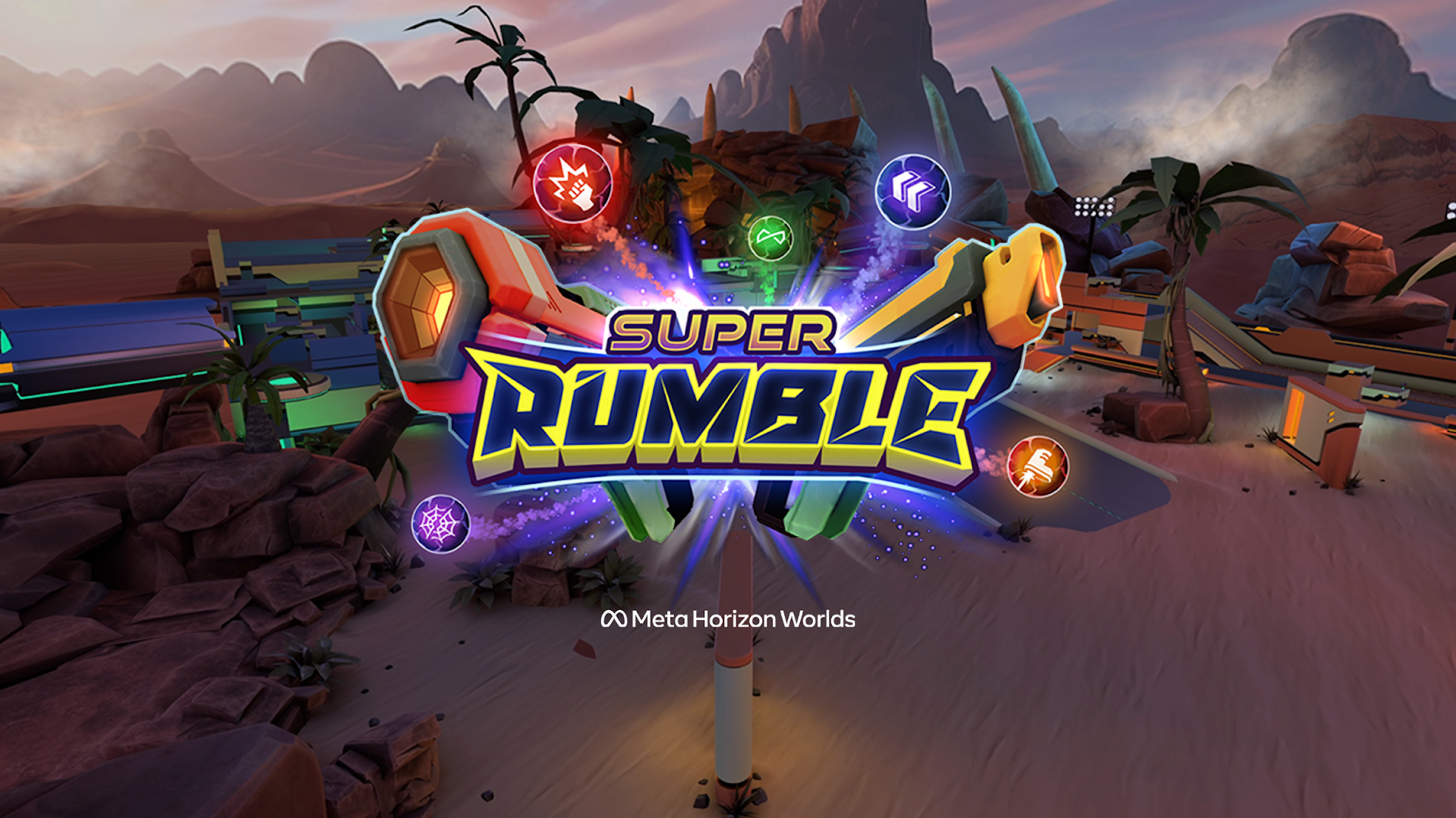
A leaked internal Meta memo last year revealed that Meta believed Horizon simply "has not found product market fit". Its competitors Rec Room and VRChat are almost always in the top 5 most popular Quest apps, while Horizon Worlds only makes the top 25.
Meta will be hoping launching on mobile and web and supporting high quality asset imports will be enough to reverse this trend and bring in a wave of new users. The vastly different input schemes of VR and smartphones mean this will likely be a significant challenge though, and Rec Room and VRChat are already available on smartphones too.
No Man's Sky celebrates its 7th anniversary with the Echoes update, which overhauls space combat and adds foveated rendering on PSVR 2.
Echoes is the 26th named update to No Man's Sky, which originally released in 2016 to mixed at best reviews. The game added SteamVR and PlayStation VR support in 2019, and was a launch title for PlayStation VR2 earlier this year.
In our PSVR 2 review we described it as offering an "essentially endless, infinite universe to explore and a sense of scale that’s really hard to match in VR" with procedurally generated planets, unending oceans of space, and multiplayer support.
The Interceptor update earlier this year improved the wrist interface controls in VR and promised “significant improvement to image quality” on PSVR 2. But the new Echoes update goes even further by adding foveated rendering support on PSVR 2 and other "significant rendering optimisations" for all VR headsets.
Foveated rendering is a technique where only the region of the display your eyes are currently looking at is rendered at full resolution, freeing up performance since the rest of the image is lower resolution. Freed up GPU resources can be used for better performance, to increase the foveal rendering resolution, or to increase graphics settings. It leverages the fact that our eyes only see in high resolution in the very center of the fovea.
Developer Hello Games claims foveated rendering and the new optimizations mean "rendering quality, stability and performance has improved across the board" on PSVR 2.
Gameplay wise, the Echoes update focuses on space combat. You can now divert power to engines, shields, or weapons, and enormous Pirate Dreadnoughts have been added to bring "huge space battles" to the game. "Defend fleets from pirates. Fly through enemy trenches to sabotage their shields, and destroy them!"
Echoes also introduces a new "long-hidden" race of robots. Taking part in robot assignments earns mechanical parts for your own robotic avatar. Other notable changes include allowing Traveler's to search for, trade and scrap weapons to become 'multi-tool scrap merchants.'
No Man's Sky Echoes is available now on all supported platforms, including SteamVR and PlayStation VR2.
 UploadVRSam Harrison
UploadVRSam Harrison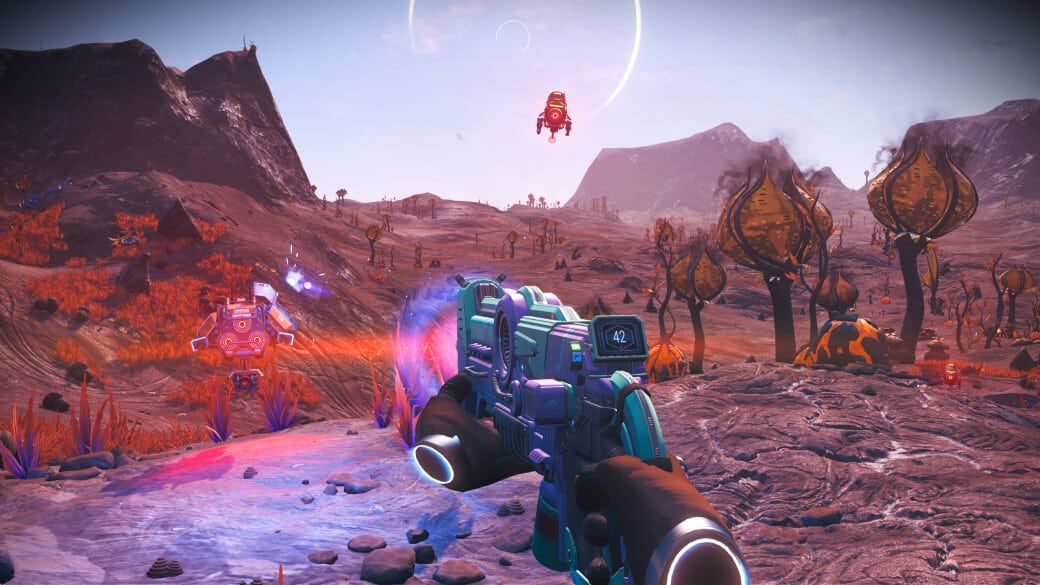
The second generation Ray-Ban Stories will reportedly have better cameras and support first person livestreaming.
Meta and Ray-Ban owner Luxottica officially announced work on new smart glasses in October last year.
Journalist Janko Roettgers says he viewed internal Meta documents detailing the improvements and new features of the upcoming device.
The current Ray-Ban Stories are camera glasses for taking hands-free first person photos and videos. They also have speakers and a microphone for music and phone calls but there is no display of any sort. Snapchat has been selling successive generations of a similar product, Spectacles, since 2017.
Roettgers reports the second generation Ray-Bans won't have a display either, but will have higher quality cameras, longer battery life, and an anti-tamper mechanism to disable capturing images or videos when the front LED is covered.
The glasses will also support livestreaming to Instagram and Facebook, with viewer comments read out by an assistant via the built-in speakers, according to the report.
 UploadVRDavid Heaney
UploadVRDavid Heaney
In March The Verge reported that Meta’s VP of AR Alex Himel told staff the company planned to release third generation glasses in 2025 with a display and neural input wristband.
Called the “viewfinder”, this heads-up display will reportedly be used to show notifications, scan QR codes, and translate real-world text in real time. To be clear: this wouldn’t be true AR, it would be a small floating contextual display.
The neural wristband is based on the tech from CTRL-Labs, a startup Facebook acquired in 2019, and Meta has openly discussed its development. It works by using using EMG (electromyography) to read the neural signals passing through your arm from your brain to your fingers. Such a device could sense even incredibly subtle finger movements not clearly perceptible to people nearby. Himel reportedly said it will let the wearer “control the glasses through hand movements, such as swiping fingers on an imaginary D-pad”.
 UploadVRHarry Baker
UploadVRHarry Baker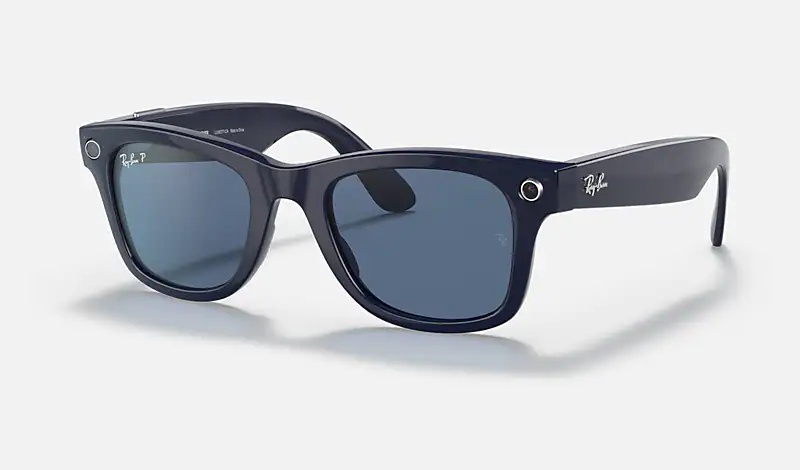
Earlier this month though The Wall Street Journal reported that less than 10% of the current first generation Ray-Ban Stories are being "used actively".
Meta reportedly isn't giving up though it seems, and the company likely hopes the new features and improvements can draw in a wider audience and retain active users.
Google reportedly plans to provide AR glasses system software for hardware companies from 2025.
In June Business Insider's Hugh Langley reported that Google had cancelled its own glasses hardware project amid the mass layoffs at the company and the departure of its AR/VR chief Clay Bavor. The hardware was said to resemble regular eyeglasses.
In a new report this week, Langley cites a source as saying "every six months there was a major pivot in the program." These shifts reportedly led to widespread frustration and even resignations. Last month the engineering director of Google's Android XR project, an operating systems veteran, quit the company citing "Google’s unstable commitment and vision".
"It's a weird bureaucratic mess" a current Google employee reportedly told Langley.
But Google is reportedly continuing the XR operating systems project without Lucovsky, and without intending to release first party hardware: Android "XR" for headsets and Android "Micro XR" for glasses. This would be similar to Google's existing primary strategy with smartphones, tablets, smart watches, and laptops.
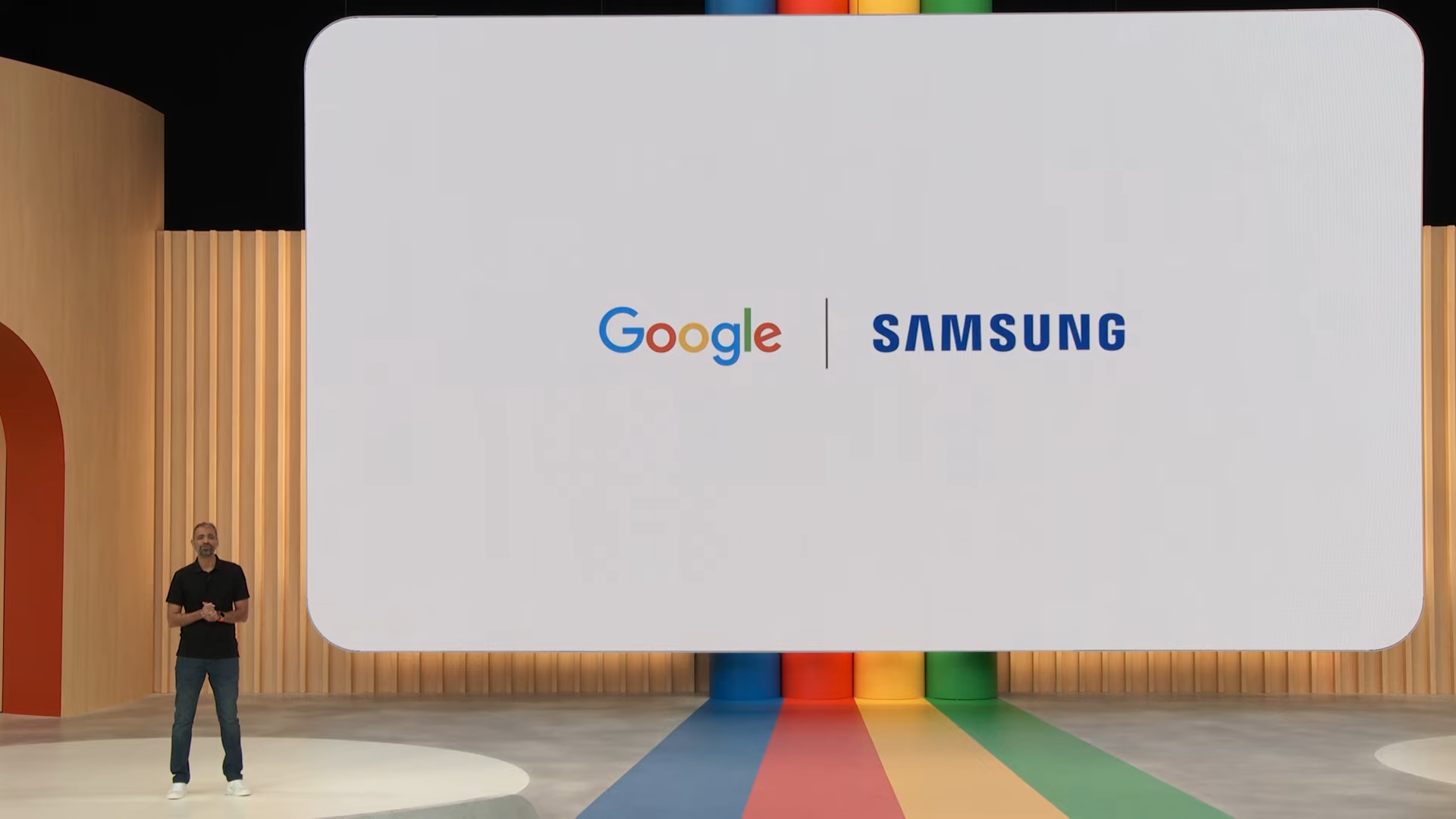
In February Samsung officially announced it was working on an XR headset that Google would provide "the software" for, and in May Google said it will share more about that project later this year. This introduction may be delayed though as Samsung is reportedly redesigning and upgrading the headset in response to Apple Vision Pro.
Langley reports Google is also looking for a hardware partner for "Android Micro XR" AR glasses, to launch in 2025 at the earliest. He claims "insiders speculate" that Samsung could be the first partner for these glasses too.
That timeline may be overly optimistic though, as the tech industry has been for years in the struggle to bring transparent AR glasses out of the realm of science fiction and into real products.
Apple reportedly postponed its full AR glasses “indefinitely” earlier this year, and Meta can reportedly only build around 1000 units of an advanced demonstrator next year followed by a downgraded consumer product in 2027, three years later than it had originally planned.
An unofficial Meta Quest 3 unboxing video was posted anonymously to Reddit.
This is becoming somewhat of a tradition now for Meta's headsets. Last year Quest Pro's design and packaging leaked a month before launch in a similar unofficial unboxing video posted by a hotel worker who said he found one.
The Quest 3 packaging shown in the video looks very similar to Quest 2, but the box looks noticeably smaller, made possible by the headset's slimmer design and the new Touch Plus controllers lacking rings.
Only the headset, controllers, and a small box (likely containing AA batteries and leaflets) are visible, which suggests the unannounced charging dock recently approved by the FCC will be sold separately, not included.
Meta officially announced Quest 3 in early June, but it hasn't yet confirmed all the headsets specs and features, such as the exact resolution, refresh rate, RAM, or the higher storage tier.
What it has officially stated is the visor is 40% thinner thanks to pancake lenses, the GPU is more than twice as powerful, and it has dual color cameras and a depth sensor for mixed reality with scene understanding. The base model has 128GB storage and will be priced at $500.
The instructional white cardboard seen attached to the headset in the unboxing may reveal another feature, however.
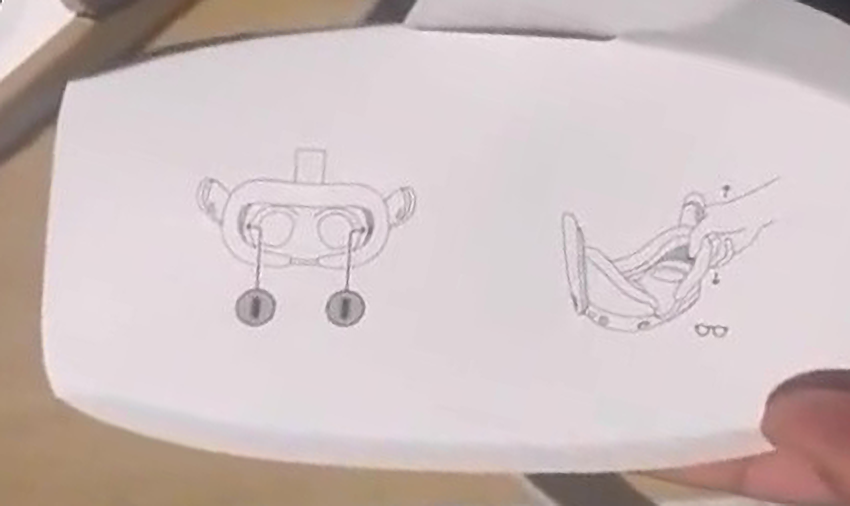
It seems to depict the ability to adjust the depth of the facial interface to move the lenses further away from your eyes. This is also called eye relief adjustment, and it's also present on Quest Pro, Valve Index, HTC Vive, and both PlayStation VR headsets.
Extending the depth allows glasses to fit between your eyes and the lenses. Quest 2 instead required removing the facial interface and adding an included "glasses spacer" underneath it.
Lens depth adjustment was actually spotted in the Quest firmware back in February:
For eye-relief adjustment, Quest 3 will have a button inside of the headset to pull it forward or backward. pic.twitter.com/ePqV29u0QS
— NyaVR (@nya_vr_) February 23, 2023
Meta hasn't yet revealed the exact launch date of Quest 3, but the company launched Quest 2 and Quest Pro at its yearly Connect conference and this year it's scheduled for September 27.
For a summary of everything announced and discovered about Quest 3 so far, read our full roundup here:
 UploadVRHarry Baker
UploadVRHarry Baker